Helping Unique Learners Find Their Genius ♥

[From Raising Bookworms: Life, Learning, and Literacy by L.R.Knost available 2014; Two Thousand Kisses a Day: Gentle Parenting Through the Ages and Stages, Whispers Through Time: Communication Through the Ages and Stages of Childhood, and The Gentle Parent: Positive, Practical, Effective Discipline now available on Amazon]
~~~~~~~~~~~~~~~~~~~~~
 Homeschooling a unique learner can be challenging simply because they don’t get the benefit of access to testing and professional support without a lot of initiative, research, phone calls, and door-knocking on your part. But the trade-off is the freedom to tailor your teaching and learning environment to your child’s needs, and that is of incredible value when educating a unique learner.
Homeschooling a unique learner can be challenging simply because they don’t get the benefit of access to testing and professional support without a lot of initiative, research, phone calls, and door-knocking on your part. But the trade-off is the freedom to tailor your teaching and learning environment to your child’s needs, and that is of incredible value when educating a unique learner.
Albert Einstein said, “Everybody is a genius. But if you judge a fish on its ability to climb a tree, it will live its whole life believing that it is stupid.” Unique learners have beautiful minds just waiting to find their genius. We just need to look outside of the box to help them find it!
Here are some of the tips, tools, and techniques I’ve learned through years of homeschooling my unique learners to help them work through the challenges they face on a daily basis:
1.) Lighten up…Everything in life is easier if you take it with a grain of salt and learn to laugh. Our unique learners will have more struggles and challenges than the average person throughout life, not just during their school years. That is an unavoidable fact. But who wants to be ‘average’ anyway? Help them to celebrate their uniqueness and embrace the future with grace and humor by sharing your own struggles, modeling coping techniques, and being able to laugh at your own mistakes. Make ‘even missteps are valuable steps on the road to success’ your homeschool motto!
2.) Play…Children learn best through play, and that applies to therapy, as well. Experience is the only true path to learning, so let their imaginations soar as they do the hard work of learning to cope with their unique challenges. (See some play-based, brain-enriching, and eye-tracking activities below)
3.) Jazz it up…Music truly is medicine for the soul. Buy a good set of headphones (not earbuds) and play classic instrumentals softly while your unique learner is trying to concentrate, whether it be on reading or writing or drawing, etc. Filtering out the cacophony of life and soothing their stress levels with the gentle strains of Mozart are only some of the benefits of music. Another benefit is that the rhythms, cadence, and timing of music actually have an organizing effect on the brain!
4.) Exercise…Invest in an exercise bicycle (We got ours for $15 from a yard sale!) that lets your unique learner sit in a comfortable seat while pedaling. The cross-over action of pedaling also has an organizing effect on the brain, and, if used while reading or playing video games (Video games can be great exercises for eye-tracking if you choose the right ones!) can actually increase the speed and effectiveness of learning.
unique learner sit in a comfortable seat while pedaling. The cross-over action of pedaling also has an organizing effect on the brain, and, if used while reading or playing video games (Video games can be great exercises for eye-tracking if you choose the right ones!) can actually increase the speed and effectiveness of learning.
5.) Get crunchy…Believe it or not, another ‘brain organizing’ activity is chewing, particularly crunchy foods, while reading, etc. Some good choices are pretzels, carrot sticks, celery, granola, and nuts. (If you’ve got a sensory sweetie like I do, be careful to let them choose something that won’t send their senses into overdrive.) Sugarless chewing gum can be substituted when you go places where foods aren’t appropriate, but still would like to offer your child a calming, organizing aid.
6.) Listen, listen, listen…Your unique learner will have more than their share of stress and possibly a harder time articulating it than others might. Slow down and really focus on what they are communicating. Listen ‘between the lines’ to their heart, their hurts, their fears, their needs. Be their safe place, their source of comfort and renewal.
7.) Hug it out…Physical closeness is healing, and so make sure that along with the extra struggles and challenges your unique learner faces, they get lots of extra cuddles, snuggles, and hugs. When they get older, a gentle touch on their shoulder or a light hand on their arm will be instantly calming and comforting because it will tap into those feelings of comfort and closeness from earlier childhood.
8.) Watch and learn…Just as every child is different, every child with challenges is unique in how they manifest those challenges and how they handle them. Paying careful attention to your own unique learner’s personality, struggles, aversions, triggers, etc. will give you clues as to how to help them learn to cope. With SPD (Sensory Processing Disorder), for example, avoiding unpleasant stimulus and providing needed stimulus is the name of the game. Typically, you’ll want to provide a quiet learning area at home, lots of freedom to move, permission to step away and de-stress when they feel overwhelmed, etc. and, when going out, avoid buffet-style restaurants and loud, crowded shopping and entertainment venues.
9.) Guide them gently…Discipline (guiding, modeling, teaching, etc.) invites communication and strengthens your parent/child connection. Punishment stifles communication and strains parent/child connections. Keep those vital lines of communication open and your parent/child connection healthy by providing consistent boundaries and gentle guidance, being open to discussion, and modeling the desired behavior.
10.) Read, read, read…Successful readers are not simply those who understand the mechanics of reading any more than successful biking is understanding the mechanics of a bicycle. Readers are born when a love for reading is fostered. Let them see you reading often. Cuddle up and read to them when they are young. Co-read (you read a sentence, they read a sentence, etc) when they are new readers or when they are tired or struggling. Let them read comics (The relation of pictures to words is a huge aid in reading comprehension.). For more reading tips, see Raising Bookworms.
Here are some exercises and activities that have helped my Renaissance Girl with her challenges with SPD, dyslexia, ADD, visual/auditory processing disorders, dyscalculia, etc:
Gross motor and fine motor cross-over exercises to get the two sides of the brain communicating more efficiently…
~Bouncing a brightly colored ball back and forth between us using alternate hands (left, right, left, right, etc.)
~Skipping, marching, swinging while singing 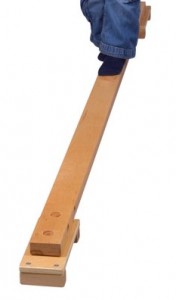
~Climbing
~Balance beam
~Bicycling
~Piano
~Sorting 
Brain-organizing activities…
~Memory matching
~Tonal music
~Free-style building with blocks, Tinker Toys, Legos, etc.
~Design-matching building
~Sensory bins
Eye-tracking activities…
~Laser pointer games-following a laser pointer light in a darkened room, pointing to moving targets (i.e. bubbles), etc.
~Ceiling tracing-following the seam of the wall and ceiling from corner to corner moving only the eyes
~Video games-Flash Focus and Brain Age are good choices for the Gameboy. Wii Fit, Carnival Games, and Sports Games are good for the Wii. There are also great games for improving eye-tracking for the X-box, Playstation, and online. If you do the research to find what best fits your child’s interests, you’ll have much better participation!
Visual-motor learning…
~Clay letters-tactile learning by forming letters and words on a template with clay or dough 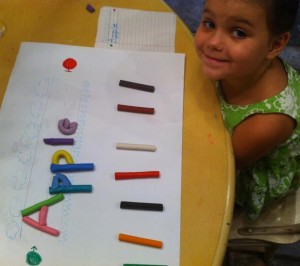
~Contextual learning-Children with dyslexia tend to learn better in context than by breaking things down to their parts, so phonics-based learning is often mind-boggling for them. Flashcards are a no-go because speed and movement impede their attempts to focus rather than help them. Writing-based learning such as copying and illustrating short poems, copying a short sentence from a wall-mounted chalkboard or large paper taped to the wall and illustrating it, writing and illustrating their own stories, and writing stories on the computer are great ways to help them learn to read.
~Once they are beginning to read, graphic novels, large-print chapter books on topics that interest them, and continued creative writing are excellent practice.
~Online reading games can be helpful, but only if they are untimed (Timed anything is a huge stressor and sets them up for frustration and failure.) and your child feels comfortable with the level of activity and brightness on the screen as otherwise these can cause headaches and their eyes to tire quickly.
These tips are not, of course, exhaustive or a replacement for professional therapies. But as you work your way through what can often be a labyrinth of paperwork, meetings, appointments, etc. on your way to finding the services your child needs, these may help to ease the wait a bit. 🙂
Related posts:
Children who love to read…READ! Engaging children’s hearts in the wonder of reading instead of just training their minds in its mechanics. Raising Bookworms
It’s time for a return to childhood, to simplicity, to running and climbing and laughing in the sunshine, to experiencing happiness instead of being trained for a lifetime of pursuing happiness…it’s time to let children be children again. A Return to Childhood
Think homeschooled children are unsocialized, over-controlled, locked-away-from-the-world misfits? Think again! My Renaissance Girl
Successful reading means far more than possessing the ability to read. Engaging the hearts of students moves reading success beyond a life skill and turns it into a life style. And graphic novels are too powerful of a tool in our arsenal to be disregarded because of pride or prejudice. Raising Super Readers~The MARVELous Power of Comic Books!
In the world of a child wonders are as simple as sticks and sheets, leaves and books, boxes and giggles, and the promise in a rainy day. The Seven Wonders of the World of Childhood
Parenting choices strongly impact the level and type of attachment a child develops and, by extension, the development of a love of learning. A love of learning grows when it isn’t stifled by fear or stress or regimented by over-structuring or a focus on achievement or competition. Parents fostering a healthy attachment are thus also fostering a life-long love of learning in their children. Live to Play~Play to Learn~Learn to Live!
If you give a toddler a book
He’ll climb into your lap
While he’s in your lap
He might lay his head on your chest
When he lays his head on your chest
He’ll hear your heartbeat
When he hears your heartbeat
He’ll probably ask if you can hear… If You Give A Toddler A Book…
Einstein recognized his unique lens and often commented about it and about how organized education systems didn’t accommodate individuality and creativity. Here is a look into this ‘unique learner’s’ mind in his own words…Beautiful Minds
 Award-winnning author, L.R.Knost, is the founder and director of the children's rights advocacy and family consulting group, Little Hearts/Gentle Parenting Resources, and Editor-in-Chief of Holistic Parenting Magazine. Books by L.R.Knost include Whispers Through Time: Communication Through the Ages and Stages of Childhood ; Two Thousand Kisses a Day: Gentle Parenting Through the Ages and Stages ; The Gentle Parent: Positive, Practical, Effective Discipline ; and Jesus, the Gentle Parent: Gentle Christian Parenting the first four books in the Little Hearts Handbook gentle parenting series, and children’s picture books Petey’s Listening Ears and the soon-to-be-released Grumpykins series.
Award-winnning author, L.R.Knost, is the founder and director of the children's rights advocacy and family consulting group, Little Hearts/Gentle Parenting Resources, and Editor-in-Chief of Holistic Parenting Magazine. Books by L.R.Knost include Whispers Through Time: Communication Through the Ages and Stages of Childhood ; Two Thousand Kisses a Day: Gentle Parenting Through the Ages and Stages ; The Gentle Parent: Positive, Practical, Effective Discipline ; and Jesus, the Gentle Parent: Gentle Christian Parenting the first four books in the Little Hearts Handbook gentle parenting series, and children’s picture books Petey’s Listening Ears and the soon-to-be-released Grumpykins series.
Bridge Over Troubled Waters~Parenting a ‘Problem’ Child
[Portions reprinted from The Gentle Parent: Positive, Practical, Effective Discipline by L.R.Knost. Two Thousand Kisses a Day: Gentle Parenting Through the Ages and Stages and Whispers Through Time: Communication Through the Ages and Stages of Childhood also available on Amazon and through other major retailers.]

We all have times when we struggle, when life gets hard, when stresses overtake us and the constant demands to grow and change and learn inherent in simply being human just feel like too much to bear.
Children are no different than adults in that they, too, can often feel overwhelmed by life. The sheer volume of growth and change and learning integral to childhood inevitably produce stress, though that isn’t necessarily a negative for all children. Some children, just like some adults, seem to have an innate ability to cope with stress, to adapt to change, and to face and conquer challenges. Some personalities even thrive on it!
But then there are those children who simply seem to struggle with life. Growth spurts cause incredible stress and discomfort. Change produces intense anxiety and resistance. And learning, being introduced to new thoughts and ideas, being stretched and challenged, inspires unease and distress.
These children are often labeled problem children, strong-willed, difficult, entitled, or brats. The reality, though, is that these are often the most sensitive children, small people who were created to be intimately in-tune with their bodies, their environment, and their fellow human beings. They feel, deeply and empathetically, other people’s pain and distress. They endure shifts in their surroundings like frontal assaults to their safety and security. They experience touch and movement of their bodies, and growth within their bodies, with painful intensity.
All too often, these sensationally gifted children are misunderstood. Their strong reactions to stimuli are misinterpreted as willfulness and stubbornness. They are punished instead of helped, controlled instead of supported, hurt instead of heard. Their uniqueness, gifts, and insights are forced underground where they often simmer in silence, bursting forth in flashes of rage or turning inward in brooding depression.
These children don’t need labels. They don’t need to be contained or controlled. They need what all children need…love, understanding, and guidance to grow into the gifted, unique individuals they were created to be.
Helping and supporting your sensitive child who is struggling is like building a bridge over troubled waters using the Three C’s of gentle discipline:
Connect:
- Observe and really get to know, understand, and appreciate the gifts and needs of the unique little person you are privileged to parent.
- Build a foundation of trust and respect in your parent/child relationship by ‘listening’ to the needs being expressed by your child’s behavior even when their behavior seems completely out of proportion to the situation.
Communicate:
- Keep an open door policy, particularly in the late evening hours when the house is quiet and everyone else is settled for the night. Sensitive children often need stillness to feel safe enough to begin processing all of the overwhelming stimuli and emotions they experience throughout the day.
- Help them to verbalize their feelings and experiences by listening to their hearts and not just their words, and quietly offering observations to help them to put things into perspective.
Cooperate:
- Work with your sensitive child to help them find coping mechanisms that will help them deal with overwhelming sensations, emotions, and situations. Some ideas are to offer them options such as…
- wearing noise-cancelling headphones to block out extraneous noises
- escaping to a Cozy Cave to take a break from the stresses of daily life
- creating a private code word that they can use to let you know they are feeling overwhelmed or that you can use to alert them that they may need to take a break or to dial things down a notch or two
- Equip them with tools to express themselves in acceptable ways (i.e. “It’s not okay to be rude, but it is okay to tell someone you need a break” or “It’s not okay to run away at school, but it is okay to go to your teacher and tell them you’re having a hard time.”)
- Work with them intentionally on a daily basis to overcome the stresses and minimize the impacts of what is, to us, normal daily life, but to them can be deeply troubling experiences.
Building a strong, supportive bridge into the future with your sensitive child will provide them with the coping skills they’ll need as adults to overcome normal stresses and challenges as well as those that come when life inevitably flows into troubled and turbulent waters.
For more tips for parenting your sensitive child and helping them learn coping mechanisms to deal with stresses, see The Gentle Parent: Positive, Practical, Effective Discipline.
Related posts:
Backtalk is Communication…LISTEN
The Gift of a Strong-Willed Child
When Children Act Out ~ Reflecting Our Emotions
The Incredible Power of the Whisper
The Taming of the Tantrum: A Toddler’s Perspective
The Thoughtful Parent’s Guide to Positive Parenting Guides
Simon and Garfunkel – Bridge Over Troubled Water Studio Version
When you’re weary, feeling small
When tears are in your eyes
I will dry them allI’m on your side
When times get rough
And friends just can’t be foundLike a bridge over troubled water
I will lay me down
Like a bridge over troubled water
I will lay me downWhen you’re down and out
When you’re on the street
When evening falls so hard,
I will comfort youI’ll take your part
When darkness comes
And pain is all aroundLike a bridge over troubled water
I will lay me down
Like a bridge over troubled water
I will lay me downOh, if you need a friend
I’m sailing right behindLike a bridge over troubled water
I will ease your mind
Like a bridge over troubled water
I will ease your mind…
 Award-winnning author, L.R.Knost, is the founder and director of the children's rights advocacy and family consulting group, Little Hearts/Gentle Parenting Resources, and Editor-in-Chief of Holistic Parenting Magazine. Books by L.R.Knost include Whispers Through Time: Communication Through the Ages and Stages of Childhood ; Two Thousand Kisses a Day: Gentle Parenting Through the Ages and Stages ; The Gentle Parent: Positive, Practical, Effective Discipline ; and Jesus, the Gentle Parent: Gentle Christian Parenting the first four books in the Little Hearts Handbook gentle parenting series, and children’s picture books Petey’s Listening Ears and the soon-to-be-released Grumpykins series.
Award-winnning author, L.R.Knost, is the founder and director of the children's rights advocacy and family consulting group, Little Hearts/Gentle Parenting Resources, and Editor-in-Chief of Holistic Parenting Magazine. Books by L.R.Knost include Whispers Through Time: Communication Through the Ages and Stages of Childhood ; Two Thousand Kisses a Day: Gentle Parenting Through the Ages and Stages ; The Gentle Parent: Positive, Practical, Effective Discipline ; and Jesus, the Gentle Parent: Gentle Christian Parenting the first four books in the Little Hearts Handbook gentle parenting series, and children’s picture books Petey’s Listening Ears and the soon-to-be-released Grumpykins series.
All the ‘Right’ Parenting Moves
[Portions reprinted from The Gentle Parent: Positive, Practical, Effective Discipline by L.R.Knost. Whispers Through Time: Communication Through the Ages and Stages of Childhood and Two Thousand Kisses a Day: Gentle Parenting Through the Ages and Stages also available on Amazon and through other major retailers.]
~~~~~~~~~~~~~~~~~~~~~
“Gentle Parenting doesn’t cure childhood because childhood isn’t a disease. It doesn’t fix children because children aren’t broken. Time is the only cure, the only fix. Time passes. Childhood ends. Gentle parenting simply recognizes normal childhood behavior as normal and guides children through the normal ages and stages of childhood with compassion and respect.”
~L.R.Knost
 Ever have one of those days where you make all the ‘right’ parenting moves, but your children still act like children? (Do I hear a resounding “YES!!!” bouncing off the walls of cyberspace? Lol.) Of course we all have, and a whole lot more than just one day, too!
Ever have one of those days where you make all the ‘right’ parenting moves, but your children still act like children? (Do I hear a resounding “YES!!!” bouncing off the walls of cyberspace? Lol.) Of course we all have, and a whole lot more than just one day, too!
I’m still chuckling over the comment someone left me that said something along the lines of me clearly never having had a ‘problem child’ and wishing me good luck if I ever have more than one child because then my chances of having said ‘problem child’ would increase. For the record, amongst my six children I have two with sensory issues, one with full-blown Sensory Processing Disorder, two with ADD, one with Auditory Processing Disorder, and two who would be labeled ‘strong-willed’ or ‘high-maintenance’ or even ‘problem children’ by people who want to label children.
 The thing that people so often misunderstand, though, is that gentle parenting is not about stopping our children from being children. It’s about guiding our children through childhood with gentleness, compassion, and respect. It’s about viewing normal childhood behavior as normal, and working with our children in developmentally appropriate ways to teach and inspire and encourage them to become the extraordinary people they were created to be.
The thing that people so often misunderstand, though, is that gentle parenting is not about stopping our children from being children. It’s about guiding our children through childhood with gentleness, compassion, and respect. It’s about viewing normal childhood behavior as normal, and working with our children in developmentally appropriate ways to teach and inspire and encourage them to become the extraordinary people they were created to be.
So, when my extraordinary little people act like children and I make all the ‘right’ parenting moves and yet it still turns out to be a frustrating, tiring, out-of-sorts kind of day for all of us, that’s perfectly okay with me. We all have days like that. We start over again the next day…and the day after that…and the day after that. That’s just how crazy, beautiful, wonderful life with children goes. ♥
For more gentle parenting resources, check out:
The Gift of a Strong-Willed Child
Bridge Over Troubled Waters~Parenting a ‘Problem’ Child
Backtalk is Communication…LISTEN
The Taming of the Tantrum: A Toddler’s Perspective
Practical, Gentle, Effective Discipline
200 Ways to Bless Your Children with a Happy Childhood
The Thoughtful Parent’s Guide to Positive Parenting Guides
When Children Hit~10 Tips for Parents
Testing the Boundaries~What’s a Parent to Do?
Toddlers, Tantrums, and Time-Ins, Oh My!
 Award-winnning author, L.R.Knost, is the founder and director of the children's rights advocacy and family consulting group, Little Hearts/Gentle Parenting Resources, and Editor-in-Chief of Holistic Parenting Magazine. Books by L.R.Knost include Whispers Through Time: Communication Through the Ages and Stages of Childhood ; Two Thousand Kisses a Day: Gentle Parenting Through the Ages and Stages ; The Gentle Parent: Positive, Practical, Effective Discipline ; and Jesus, the Gentle Parent: Gentle Christian Parenting the first four books in the Little Hearts Handbook gentle parenting series, and children’s picture books Petey’s Listening Ears and the soon-to-be-released Grumpykins series.
Award-winnning author, L.R.Knost, is the founder and director of the children's rights advocacy and family consulting group, Little Hearts/Gentle Parenting Resources, and Editor-in-Chief of Holistic Parenting Magazine. Books by L.R.Knost include Whispers Through Time: Communication Through the Ages and Stages of Childhood ; Two Thousand Kisses a Day: Gentle Parenting Through the Ages and Stages ; The Gentle Parent: Positive, Practical, Effective Discipline ; and Jesus, the Gentle Parent: Gentle Christian Parenting the first four books in the Little Hearts Handbook gentle parenting series, and children’s picture books Petey’s Listening Ears and the soon-to-be-released Grumpykins series.
Why Whining is a Win!
[Reprinted from Whispers Through Time: Communication Through the Ages and Stages of Childhood by L.R.Knost. Two Thousand Kisses a Day: Gentle Parenting Through the Ages and Stages and The Gentle Parent: Positive, Practical, Effective Discipline also available through Amazon and other major retailers.]
 It’s seven o’clock and you’re finishing up the dishes before starting bedtime baths. And then it starts…the whining. Every. Single. Night. Your four-year-old knows the routine. She knows you are going to read her favorite bedtime book. She knows you will let her choose which pajamas to wear. She knows she has to brush her teeth. But that doesn’t stop her from standing in the kitchen night after night whining about the same things.
It’s seven o’clock and you’re finishing up the dishes before starting bedtime baths. And then it starts…the whining. Every. Single. Night. Your four-year-old knows the routine. She knows you are going to read her favorite bedtime book. She knows you will let her choose which pajamas to wear. She knows she has to brush her teeth. But that doesn’t stop her from standing in the kitchen night after night whining about the same things.
So what’s the deal? Short-term memory loss? An innate desire to drive you crazy? A disorder of the vocal cords that makes using a normal voice impossible after the sun sets and every time she doesn’t get her way all day long?!?
Here’s a shocker for you: Whining is actually a sign of maturity! Yep, that unnerving, endless, nails-on-a-chalkboard, make-your-head-explode whine is a sign that your little one is growing up and, get this, gaining self-control! I can see your heads shaking, but read on, parents, caregivers, and bleeding ears of the world, read on.
Whining, believe it or not, is an advanced skill. Babies come into the world with exactly one form of verbal communication–crying. They may smack their lips and root for the breast when hungry. They may arch their back or wiggle in discomfort when they need a diaper change. But when physical expressions don’t result in needs being met or their needs are emotional rather than physical, then crying is always the ‘default’ communication. Every need, every discomfort, every bit of loneliness or anxiety or frustration or stress has to be communicated through that one single venue.
Over time as babies grow into toddlers, they begin to learn new ways to communicate, pointing, grunting, picking up a few words here and there, and they move into a more interactive stage wherein they make attempts to communicate in these new ways, but fall back very quickly into crying if they aren’t understood and responded to quickly.
As time goes on, toddlerhood gives way to the preschool years and language skills advance, becoming the main source of communication for a little one. But even so, their grasp of language is limited and their prefrontal cortexes (center of forethought/pre-thinking skills) are still developing. This leads to a rather dichotomous situation in which they know what they want to say, but often can’t quite put the words together quickly or clearly enough for us oh-so-impatient adults.
As they work to communicate, their frustration levels rise and stress hormones sap the blood flow from those underdeveloped ‘thinking’ portions of their brains and, just when they need the use of language the most, they begin to lose the ability to articulate their needs. As toddlers they would fall quickly back into crying at this point, but as preschoolers their more advanced self-control helps them to avoid immediately dissolving into tears and, instead, they fall into the ‘middle-ground’ of whining.
Whining is, in fact, just an advanced form of crying and, as such, is just as grating on the nerves as crying because it is designed to get the attention of a caregiver. The difference is actually in our attitudes toward whining. We accept crying as a normal part of baby and toddlerhood, but label the whining of a preschooler ‘bratty’ and ‘spoiled’ and refuse to listen to them until they ‘use their normal voice’ just when they need us to listen the most!
If we, as adults, would adjust our mindsets to accept the normalcy of whining, it would lose a bit of its power to annoy while enabling us to respond empathetically to our children when they’re mustering all their newly-developed coping skills to avoid a meltdown.
So, what can we do when our little ones lapse into ‘whine-eze’ and we feel like tearing our hair out? Well, as always, an ounce of prevention is worth a pound of cure:
- Pay attention to the time of day whining seems to occur most often.
- Watch for triggers such as hunger, missed naps, and over-hurried schedules.
- Make whatever adjustments you can to prevent the whining before it starts.
- If all else fails and the whining does commence, remember that your little one is struggling to communicate in that moment. Respond by slowing down, sitting with them or kneeling down in front of them, and giving them your full attention.
- Use a quiet, soothing tone to reassure them, and listen patiently all the way through as they work their way back through the frustration and find the words to express themselves.
- You may not be able to give them the toy or snack or whatever else it is they want at that moment, but giving them the chance to be heard is often enough to forestall an all-out meltdown.
More than anything, though, giving your little ones the gift of your time and attention when they need it most (and often seem to deserve it least) will help foster that all-important connection that provides the basis for gentle guidance and boundary-setting. And, as an added bonus, children who feel heard tend to outgrow the whining stage much earlier than children who feel like they have to fight to be heard.
Related posts:
The Gift of a Strong-Willed Child
Backtalk is Communication…LISTEN
When Children Act Out ~ Reflecting Our Emotions
Bridge Over Troubled Waters~Parenting a ‘Problem’ Child
The Taming of the Tantrum: A Toddler’s Perspective
Practical, Gentle, Effective Discipline
200 Ways to Bless Your Children with a Happy Childhood
When Children Hit~10 Tips for Parents
Toddlers, Tantrums, and Time-Ins, Oh My!
 Award-winnning author, L.R.Knost, is the founder and director of the children's rights advocacy and family consulting group, Little Hearts/Gentle Parenting Resources, and Editor-in-Chief of Holistic Parenting Magazine. Books by L.R.Knost include Whispers Through Time: Communication Through the Ages and Stages of Childhood ; Two Thousand Kisses a Day: Gentle Parenting Through the Ages and Stages ; The Gentle Parent: Positive, Practical, Effective Discipline ; and Jesus, the Gentle Parent: Gentle Christian Parenting the first four books in the Little Hearts Handbook gentle parenting series, and children’s picture books Petey’s Listening Ears and the soon-to-be-released Grumpykins series.
Award-winnning author, L.R.Knost, is the founder and director of the children's rights advocacy and family consulting group, Little Hearts/Gentle Parenting Resources, and Editor-in-Chief of Holistic Parenting Magazine. Books by L.R.Knost include Whispers Through Time: Communication Through the Ages and Stages of Childhood ; Two Thousand Kisses a Day: Gentle Parenting Through the Ages and Stages ; The Gentle Parent: Positive, Practical, Effective Discipline ; and Jesus, the Gentle Parent: Gentle Christian Parenting the first four books in the Little Hearts Handbook gentle parenting series, and children’s picture books Petey’s Listening Ears and the soon-to-be-released Grumpykins series.
Letter from a Teenage Son Who Was Spanked as a Small Child
[L.R.Knost, best-selling author of The Gentle Parent: Positive, Practical, Effective Discipline, Whispers Through Time: Communication Through the Ages and Stages of Childhood and Two Thousand Kisses a Day: Gentle Parenting Through the Ages and Stages available on Amazon and through other major retailers.]
~~~~~~~~~~~~~~~~~~~~~
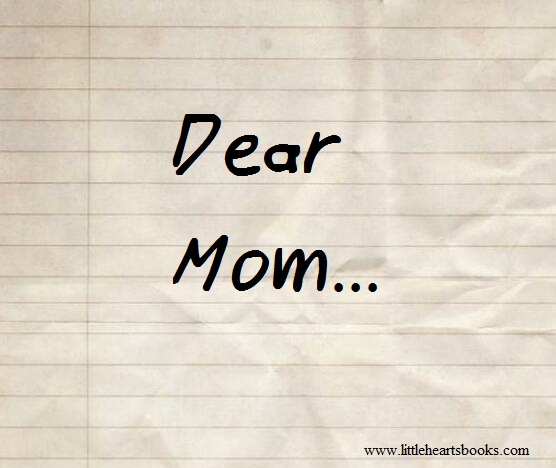 A gentle mama overseas gave me permission to share parts of our email exchange that spanned several months and ended with a deeply touching letter from her son:
A gentle mama overseas gave me permission to share parts of our email exchange that spanned several months and ended with a deeply touching letter from her son:
Hi, I spanked my three elder sons when they were younger. I am a very gentle person so it was never in anger ( I struggled to do it but read how I had to gain control). My teenage sons love me very much and seem to have no hassles at all with listening and respecting me. I have raised my younger two daughters, aged 8 years and 19 months without hidings. As I read up on gentle parenting only after their births, I am struggling with both of them to respect and listen. Ok the baby is still so little! But my oldest daughter is really loving and kind, but does not listen! My sons spoke to me the other day and said I have no authority with them and why don’t I just spank them already. I am at a cross roads. My older daughter of 8 is too old to spank! Have I made a mistake? My baby girl is so sweet and I don’t want to smack her on her bottom but I feel like when she throws tantrums it takes me ages to negotiate and in the end she gets her way, whereas when my boys were little they threw a tantrum and all I said in a calm voice was “stop or you will get a smack on the bottom” and they stopped shortly. I want to be a good parent, but above all I want my babies to be safe and know to listen. Please encourage me with facts as to why I must stick to no spanking for defiance, because I am very confused now.
I shared You’re Not the Boss of Me! and Practical, Gentle, Effective Discipline with this gentle mama and discussed how changing parenting styles is hard on parents, but sometimes we forget how hard it can be for children, too. Her older sons were upset with their mother for not spanking their little sisters as they were spanked. They felt like spanking was good enough for them and remembered being forced to obey and didn’t understand why their mother was letting their sisters get away with not listening. In our discussion, I asked her to look at it another way–she would never allow her older sons to hit their little sisters, but her boys wanted the little girls to be hit like they were. Thinking of it that way understandably upset her…
My boys are very gentle boys and have never hurt their sisters and would never HIT their sisters and they don’t wish for them to be HURT. They are incredibly protective. And a lot more polite and caring than almost all of their friends. I have a lot of children over to play and I really don’t see a mean bone in my boys’ bodies. They just feel that their sister is disrespectful towards me and at times her not listening makes it unpleasant for everyone. They feel there should be consequences to her actions.
Here is the rest of our email conversation: I hear you, mama. Replacing euphemisms like spanking, smacking, hidings, etc. by their definition, hitting, is very uncomfortable. The thing is, even domestic violence used to have euphemisms such as “reasonable smacking of wives” and “necessary chastisement” in order to make them more palatable. It wasn’t until society began to call it what it was, hitting, abuse, beating, violence, that society’s views changed. The same is true for parenting. If we want to change, we have to face the reality of what we are trying to change from. If we whitewash it with euphemisms, our motivation to change will be diminished and our chances of success limited. Your sons sound like wonderful boys, and I’m sure they love their sisters in the same way you loved your boys even while you were spanking them. But now you want something better for your little ones, and it’s not too late for you to want that same better thing for your boys, either. Yes, they got hit when they were little and misbehaved. And now they think hitting is the way to control small children, which is why they want you to hit their little sisters. But if you talk with them honestly about regretting having hit them and ask for their support as you try to move away from using threats and hitting to control their sisters and trying to work toward a communication-based, peaceful parenting style, then your sons will begin to learn that maybe hitting children isn’t they best way to raise them. And, since you will be communicating with your sons respectfully and honestly, you will actually be modeling the exact kind of parenting you are wanting to use with their little sisters…connection, communication, respect–an invitation to cooperate. It’s not easy, mama, but your boys will end up more peaceful parents themselves if you take the time to involve them in your transition to gentle parenting with not only them, but their little sisters, too.
I am trying to wrap my head around it all. We were raised with abuse and my older four children’s dad, who is no longer around, abused us too. But I am remarried to a very gentle man who does not agree with spanking, so he supports me now in trying. I will persevere. Thank you.
I know you are, mama. And it is so, so hard. The Little Hearts community of parents are all here for one reason, to support and encourage and share with each other on our gentle parenting journeys. None of us are perfect, and all of us have things to learn and struggles to overcome. Working together will help all of us do better, though, and that’s why we’re here. ♥
(A few days later): I have been reading your work and thinking about my parenting ways so much! I considered myself a gentle parent all these years, simply because I never smacked in anger but out of a duty almost to stick to the “rules” I had been taught in Christian Parenting books on disciplining etc. I am a loving Mommy and meant well, but something always bothered me about smacking my boys. I was told it bothered me because I had not been properly raised. Anyhow I was praying as I was washing the dishes today and felt my heart swell and a rush of emotions. I am so positive that the Lord spoke to me. I felt completely determined to follow your advice and believe now in my heart that this gentle parenting is the right way to love and care for children. I sat my sons down and read a few of your quotes etc. to them. I then apologized for smacking their little bottoms when they were younger when they were defiant instead of talking it through with them better. My sons all hugged me tight and my 16 year old son said, “Mom, we’re sorry we didn’t listen to you because we don’t care that you smacked us but we care that you had to be someone you aren’t to feel you had control of us. It’s not in your nature to smack, Mom, that’s why you were always so upset after you smacked us, because it changed how you felt about YOU. Now you can be the parent you will be proud of.” Ah it broke my heart. I am so grateful I found your wisdom. I will never meet you to thank you, but I am sending you gratitude across the oceans!!
Oh, mama, that’s so beautiful. Your boys sound like amazing young men!
(Weeks later): Things are working well. Thank you for your wise kind heart. I am loving raising my children this way!! I am truly happy for the first time. I have always loved being a mother, but hated the confusion and regret after hidings, never sat well with me. Always had to psych myself up to go get the wooden spoon, take them to smack bottom…ahhhhhhggggg the knot I get in my tummy just thinking if it! Really pleased I saw the light and had the strength of my convictions at last TO CHANGE. I found your site two years after I decided no more hidings! So I had been doing the gentle parenting thing already, but I almost gave up. I am so grateful to you for encouraging us all to wait for the greater long term reward.
Thank you, mama. You don’t know how much that means to me to hear that! ♥
(Months later): My son wrote a letter to me. I thought it may help other parents. I cried so much I felt sick. I regret the past. I used to think I was such a great mom. I thought I was fair and set good boundaries and tried to protect them from their biological dad’s temper by ‘keeping them in line.’ I am working daily to heal my older sons. This letter was confirmation and also the realization that we cannot escape consequences. My son is loving and affectionate towards me, but is this letter ok? I mean in your opinion is he ok?
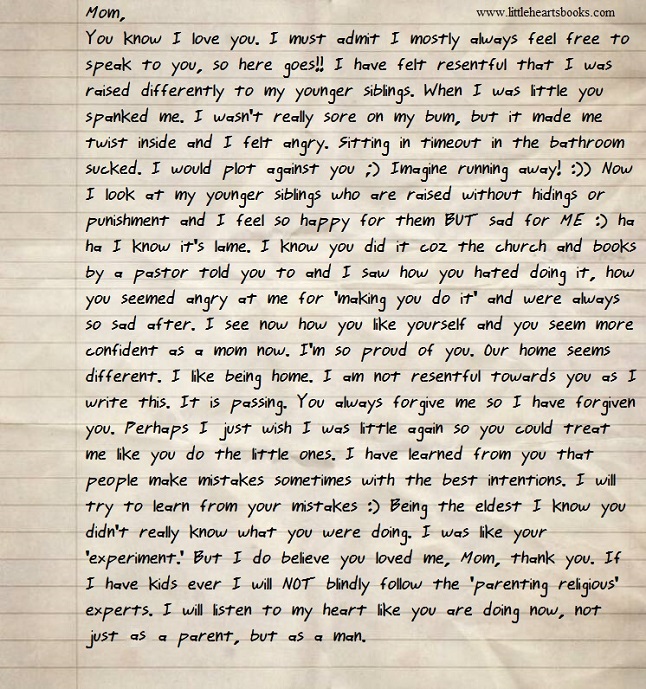 Oh, mama, that made me tear up. Your guy is more than okay. He’s brilliantly more than okay! He’s thoughtfully working through his feelings and sharing them with you honestly because he trusts you with his big emotions. And he’s extrapolating from his experiences and yours and coming up with a life plan based on a strength of character that is very, very evident in his writing. ♥
Oh, mama, that made me tear up. Your guy is more than okay. He’s brilliantly more than okay! He’s thoughtfully working through his feelings and sharing them with you honestly because he trusts you with his big emotions. And he’s extrapolating from his experiences and yours and coming up with a life plan based on a strength of character that is very, very evident in his writing. ♥
~~~~~~~~~~~~~~
♥ Changing the World, One Little Heart at a Time ♥
Related posts: When Children Act Out ~ Reflecting Our Emotions The Problem with Punishment Backtalk is Communication…LISTEN Changing the World, One Little Heart at a Time 12 Steps to Gentle Parenting Practical, Gentle, Effective Discipline The Color of Change Children of Violence
 Award-winnning author, L.R.Knost, is the founder and director of the children's rights advocacy and family consulting group, Little Hearts/Gentle Parenting Resources, and Editor-in-Chief of Holistic Parenting Magazine. Books by L.R.Knost include Whispers Through Time: Communication Through the Ages and Stages of Childhood ; Two Thousand Kisses a Day: Gentle Parenting Through the Ages and Stages ; The Gentle Parent: Positive, Practical, Effective Discipline ; and Jesus, the Gentle Parent: Gentle Christian Parenting the first four books in the Little Hearts Handbook gentle parenting series, and children’s picture books Petey’s Listening Ears and the soon-to-be-released Grumpykins series.
Award-winnning author, L.R.Knost, is the founder and director of the children's rights advocacy and family consulting group, Little Hearts/Gentle Parenting Resources, and Editor-in-Chief of Holistic Parenting Magazine. Books by L.R.Knost include Whispers Through Time: Communication Through the Ages and Stages of Childhood ; Two Thousand Kisses a Day: Gentle Parenting Through the Ages and Stages ; The Gentle Parent: Positive, Practical, Effective Discipline ; and Jesus, the Gentle Parent: Gentle Christian Parenting the first four books in the Little Hearts Handbook gentle parenting series, and children’s picture books Petey’s Listening Ears and the soon-to-be-released Grumpykins series.
Backtalk is Communication…LISTEN
[Reprinted from Whispers Through Time: Communication Through the Ages and Stages of Childhood by L.R.Knost. Two Thousand Kisses a Day: Gentle Parenting Through the Ages and Stages and The Gentle Parent: Positive, Practical, Effective Discipline also available through Amazon and other major retailers.]
 With more than 90% of parents admitting to spanking or otherwise physically punishing their children at least occasionally, mainstream American parenting can certainly be defined as punitive. If you go to the library or browse the shelves at Barnes & Noble or check out Amazon’s best sellers in the parenting genre, you will find a predominance of popular, punishment-based, obedience-focused parenting guides. Whether its spanking or time outs or removal of privileges or time confined in their room, the vast majority of children in the United States are raised with punitive parenting.
With more than 90% of parents admitting to spanking or otherwise physically punishing their children at least occasionally, mainstream American parenting can certainly be defined as punitive. If you go to the library or browse the shelves at Barnes & Noble or check out Amazon’s best sellers in the parenting genre, you will find a predominance of popular, punishment-based, obedience-focused parenting guides. Whether its spanking or time outs or removal of privileges or time confined in their room, the vast majority of children in the United States are raised with punitive parenting.
When it comes to children talking back to parents, many of these punitive parenting guides dictate a zero-tolerance policy. By their definition, backtalk is often characterized as verbal or emotional abuse of parents, defiance, rudeness, or threats:
- Verbal or emotional abuse of parents is considered any statement that insults or hurts a parent such as, “You’re so mean!” or “I wish I didn’t even have parents!” or “I hate you!”
- Defiance is any statement containing the word “No” in response to a parental command.
- Rudeness is defined as anything from deep sighs to rolled eyes to stomped feet.
- Threats are any statements that give conditions such as, “If you take away my cell phone, I’ll just go get a new one!” or “If you don’t drive me to my friend’s house, I’m walking there!”
These parenting guides direct parents to decide which punishment to mete out when their child talks back to them, specifying that the deciding factor should be whichever punishment would be the most unpleasant, painful, and distressing for the child. Punishments are to be carried out swiftly and without discussion. When the retribution for the child’s actions is over, it is to be followed with a lecture laying down the laws of the family. Again, no discussion is allowed, but if the child expresses appropriate penitence, love and hugs can then be offered.
In addition to the sick feeling in the pit of my stomach at the thought of children being subjected to this kind of harsh, punitive parenting, I’m saddened by the upside-down reasoning that shuts communication down instead of utilizing it to bring healing, understanding, and restoration to the parent/child relationship.
Take a look at the order of parenting prescribed: First, punishment meted out by the parent. Second, lecture delivered by the parent. Third, conditional reconnection based on a proper expression of remorse to the parent from the child.
In gentle parenting, the order and intent of parenting would be the polar opposite: First would come listening for the need behind the behavior and reconnecting with the child at the point of need. Second, would be initiating a two-way communication about the problem and brainstorming about how to address the issue in ways that will meet everyone’s needs. Third, would be offering guidance and equipping the child with better ways to express needs in the future.
The punitive parenting approach focuses on the child as the problem and attempts to solve the problem by ‘fixing’ the child through intentionally unpleasant external forces.
The gentle parenting approach focuses on the child having a problem and attempts to help the child solve the problem through connection, communication, and inviting cooperation.
Now look at the definitions of backtalk–verbal and emotional abuse of parents, defiance, rudeness, and threats. The questions that immediately arise are: What about the parents? Are they held to the same standards as the children? Or do they threaten? Do they say ‘No’? Do they sigh? Do they hurt their children?
As parents, our actions will always be reflected in our children’s behavior. Children learn what they live. No amount of lecturing can undo the powerful impact on a child of their parent’s own behavior and choices.
When a child backtalks, sometimes also referred to as mouthing-off or sassing, they are in the throes of a huge, internal maelstrom of emotion. Whatever they are reacting to in the moment, whether it’s being told ‘no’ about something or being asked to do or not do something, it is rarely those issues that are at the root of the problem. The moment at hand is just the tipping point causing a fissure in the child’s heart that lets out a bit of the steam inside. The real concern should be that there is, metaphorically, steam in the child’s heart to begin with.
It is at this point that parents have the opportunity to model self-control and self-regulation by controlling their own knee-jerk reaction to their child’s backtalk. Instead of meeting fire with fire, childish outburst with childish parental outburst, child’s tantrum with adult tantrum, parents can slow down, breathe through their own emotions, and then listen through the fiery storm of their child’s words to the hurt, fear, and anger behind the words.
In the same way that “a gentle answer turns away wrath,” a soft-voiced, “Let’s take a minute and calm down so we can work through this together, okay?” from a parent is a magical, healing balm that immediately begins to diffuse tough situations and creates an atmosphere in which connection and communication can bring effective, peaceful solutions not only to the issue at hand, but to the inner turmoil that prompted the outburst in the first place.
Meeting a child at their point of need when that need is expressed through meltdowns, yelling, disrespect, or defiance takes patience, self-control, and empathy on the part of a parent, which can be a huge growth experience for the parent if they, themselves, were not parented that way. But the impact of living those positive life skills in front of our children is immeasurable.
Parenting isn’t a perfect science and parents aren’t perfect people, but creating an overall atmosphere of respect in a home starts with the parents modeling respect in their own tone of voice, in their own reactions to stressful situations, in their own interactions with their children.
It’s not easy, for sure. But the best things, the most valuable things, in life rarely are. Working toward being understanding, available, and responsive to our children’s needs yields a priceless return in our relationship as the years fly by and adulthood looms. Not meeting those needs, though, may have serious negative consequences…
Dear Daughter,
You entered your teen years with a bang a few years ago, and the explosions have been shattering our home ever since. I’ve begged, threatened, bribed, and punished; cried, shouted, and bargained; but I just can’t find a way to reach you anymore. You constantly say I don’t listen to you, but how can I when you won’t talk to me? You say I don’t understand you, but how can I when you push me away? You say we aren’t a family, but then spend every day with earphones in your ears, blocking us out. You ask me why I hate you, then roll your eyes when I tell you I love you. How did it come to this? We used to be such a happy family. Please, let me be there for you during this huge transition in your life. Let’s really try to communicate with each other. I’m just lost here, honey, and I need you to reach out and help me reconnect with you. I love you.
Your Dad
‘Dear’ Dad,
Happy family? Are you kidding me? No, I guess not. You never did get it. Okay, you asked, so I’ll tell you. You were always happy because you were always in control. Want to know why I don’t talk to you now? Because you never listened when I was little. When I was scared in my room at night and called you, you either ignored me or threatened to spank me if I didn’t go to sleep. I’d lay there, crying so hard I’d almost throw up, terrified of the sounds and shadows in my room, but even more terrified of you. So, sorry, but I don’t buy that you’re ‘there for me’ when it’s only ever been at your own convenience. When you were mad at something I’d done and I tried to explain myself, you’d call it backtalk and smack me in the mouth. So forgive me if I don’t really believe you when you say you want to ‘communicate’ with me now. When I’d try to show you a dance I’d made up or tell you about how someone had pushed me on the playground, you couldn’t even be bothered to look away from your stupid computer while I was talking, so if I’m wrapped up in my electronics, I learned that little trick from you, Father Dear. Oh, and reconnect? Really? That implies that we were once connected. But when I was a little girl and invited you into my world and asked you to play with me, you were always too busy. So if you don’t understand me, sorry, but that invitation expired years ago. Want to know why I think you hate me? Because your actions told me so. Your ‘love’ is just words.
‘Your’ Daughter
Not all children react this way to harsh, punitive, control-based parenting, of course. Some children, due to personality, other influences and mentors in their lives, or simply as a survival instinct, will turn out okay despite how they are parented.
But ‘okay’ is too mediocre a goal when it comes to growing our children into the adults who will one day lead our world. Instead of raising children who turn out okay despite their childhood, let’s raise children who turn out extraordinary because of their childhood. Let’s grow excellent, outstanding, remarkable adults who will be world changers for the next generation and the generations to come.
Related posts:
When Children Act Out ~ Reflecting Our Emotions
Changing the World, One Little Heart at a Time
Practical, Gentle, Effective Discipline
 Award-winnning author, L.R.Knost, is the founder and director of the children's rights advocacy and family consulting group, Little Hearts/Gentle Parenting Resources, and Editor-in-Chief of Holistic Parenting Magazine. Books by L.R.Knost include Whispers Through Time: Communication Through the Ages and Stages of Childhood ; Two Thousand Kisses a Day: Gentle Parenting Through the Ages and Stages ; The Gentle Parent: Positive, Practical, Effective Discipline ; and Jesus, the Gentle Parent: Gentle Christian Parenting the first four books in the Little Hearts Handbook gentle parenting series, and children’s picture books Petey’s Listening Ears and the soon-to-be-released Grumpykins series.
Award-winnning author, L.R.Knost, is the founder and director of the children's rights advocacy and family consulting group, Little Hearts/Gentle Parenting Resources, and Editor-in-Chief of Holistic Parenting Magazine. Books by L.R.Knost include Whispers Through Time: Communication Through the Ages and Stages of Childhood ; Two Thousand Kisses a Day: Gentle Parenting Through the Ages and Stages ; The Gentle Parent: Positive, Practical, Effective Discipline ; and Jesus, the Gentle Parent: Gentle Christian Parenting the first four books in the Little Hearts Handbook gentle parenting series, and children’s picture books Petey’s Listening Ears and the soon-to-be-released Grumpykins series.
The Incredible Power of the Whisper

[Reprinted from Whispers Through Time: Communication Through the Ages and Stages of Childhood by L.R.Knost. Two Thousand Kisses a Day: Gentle Parenting Through the Ages and Stages and The Gentle Parent: Positive, Practical, Effective Discipline also available on Amazon and through other major retailers.]
If a picture is worth a thousand words, then a whisper is worth two thousand when it comes to parenting. In the same way that the instinctive human reaction to someone raising their voice is to raise our voice one octave higher, to out-shout the shouter, to over-power the person powering-up on us, the instinctive human response to someone whispering is to quiet down, to lean-in, to listen.
As parents, it’s up to us to exercise the wisdom and maturity to control our own instinctive reaction to our children’s piercing screams, ear-shattering shrieks, and mind-blowing, foot-stomping, out-of-control fits. Small people have big emotions and need help processing them. Their cries as babies and shrieks and tantrums as toddlers and meltdowns as preschoolers are, literally, cries for help.
Ignoring or punishing them, or reacting with anger ourselves, simply forces them to bury their unresolved emotions and causes us to miss an opportunity to not only share our wisdom by helping them process their big feelings, but also to guide our children toward more appropriate ways to communicate as they grow. In some cases, when a child’s emotions are forced underground it results in a child who simmers with hidden rage just waiting to explode again or, worse, the rage may turn inward and result in a child who is withdrawn, detached, or even depressed.
Having parenting tools ready and waiting for the inevitable challenges of raising little humans is wise. When emotions begin running high, and as parents we can feel our own stress levels rising, knowing we have a well-stocked parenting toolbox with tried and tested tools helps us to keep our cool so that we can parent more intentionally and effectively.
In the first weeks of life, a baby has one ‘default’ mode of verbal communication…crying. They may give physical cues to their needs such as chewing on their hands to indicate hunger or the beginning of teething, but their verbal communication takes the sole form of crying.
From those first tiny squeaks and mewls of a newborn, a baby’s cries mature into whimpers, squeals, screams, and sobs, all communicating one thing: “I need help.” When we respond to our baby’s cries quickly and gently, whether it’s to feed them or change them or give them a cuddle, we communicate in return, “I’m here. You can count on me.”
But then there are those times when we’ve fed them, changed them, burped them, rocked and cuddled and walked with them, and their piercing screams still shatter the silence…and our hearts. Those are times when parents often begin to feel overwhelmed, stressed, sometimes even resentful and angry because no matter what they try, they can’t ‘fix’ their baby and make them stop crying. It is in those moments of frustration and distress that we need to breathe in deeply to calm ourselves, then stop stressing over trying to ‘fix’ our baby and instead whisper in our little one’s ear, “I’m here. I’ve got you. We’ll get through this together.” They may not understand our words, but they will hear our heart.
The truth is that a baby’s cries can’t always be ‘fixed’ and sometimes the need they’re communicating is the need to express their emotions, but they always, always need the comfort and assurance that they will be heard and that their needs will be met and that they can trust us to be there for them, no matter what.
Once a baby reaches the crawling, exploring, discovering stage, they often have a great time experimenting with the volume, pitch, and range of their voice, much to the chagrin of their parents and pretty much everyone else within earshot. The ear-shattering squeals and bellows and joyful shrieks at this stage can be disconcerting to us parents, to say the least, especially when our little falsetto performs their operatic interpretation in public places such as doctor’s offices, libraries, and restaurants.
This is a prime opportunity to exercise the power of the whisper. When the first shriek splits the silence, we can hold our finger to our lips, smile like we’re inviting them to join in on a secret, and whisper, “It’s whisper time. Let’s use our little voices together.” Making a game out of it invites cooperation rather than demands obedience, a much more effective parenting technique, and practicing little voices together demonstrates what we want our little one to do instead of simply telling them what we don’t want them to do.
Don’t be surprised if it takes many repetitions over several outings before your little one begins to get the idea, though. As with all parenting, time and patience and an awareness (and acceptance!) of what is normal for each developmental stage is key.
Toddlers and preschoolers are famous for their big tantrums sparked by big emotions and big frustrations. Obviously being aware of and avoiding tantrum triggers such as hunger, tiredness, and over-stimulation is important. But even with the most proactive parenting, there may still be times when our little ones have unexpected, incomprehensible, inconsolable tantrums.
When faced with a toddler or preschooler in the throes of a tantrum, if we know what caused the tantrum, we can validate the emotion with a soft-voiced, “You’re angry (disappointed, sad, hurt) because you (fill in the blank).” Often just hearing their feelings put into words is enough to calm a toddler who is frustrated at their inability to express themselves, but sometimes they need a bit of time and support to work through their big emotions.
If the tantrum continues we need to stay calm and present and remember that we are modeling self-control and self-regulation when we practice those skills instead of having an adult-style tantrum in response to our child’s tantrum. Instead of trying to control our child’s outburst with demands or threats or bribes, we can simply stay close and whisper, “I hear you. I’m here.”
The secret of the whisper in taming a tantrum can be seen in the difference between dumping a bucket of water on a fire, which can force the fire underground where it may smolder and reignite unexpectedly, versus spraying a gentle mist on the fire so it’s slowly and fully extinguished, leaving the ground saturated so the fire won’t reignite. Settling your little one quietly and patiently with a whisper is the gentle mist that saturates them with your unconditional love and support so they don’t simmer with hidden rage that may erupt spontaneously again.
Remember, no matter the problem, kindness is always the right response. When your child is having a problem, stop, listen, then respond to the need, not the behavior. The behavior can be addressed later, after the need has been met, because only then is the door to effective communication truly open.
The thing to keep in mind is that there is no cure for childhood. There is no parenting secret that will ‘work’ to keep children from being children. Children will cry. They will tantrum. They will yell and giggle and climb and run and throw things and build things and hit and hug and explore and make glorious mistakes and incredible discoveries. They will be human. They will be children. And that’s more than okay. That’s beautiful, messy, wonderful childhood, just as it should be.
Parents are guides through the incredible journey of childhood, not to keep their children from experiencing childhood, but to keep them safe as they learn the magnificent life lessons that childhood has to offer.
Related posts:
The Taming of the Tantrum: A Toddler’s Perspective
Practical, Gentle, Effective Discipline
10 Ways to Play with your Children when Play is the Last Thing on your Mind
200 Ways to Bless Your Children with a Happy Childhood
Playground Confessions~Look Who’s Talking!
When Children Hit~10 Tips for Parents
Testing the Boundaries~What’s a Parent to Do?
Toddlers, Tantrums, and Time-Ins, Oh My!
Easy Peasy DIY Parenting Tools
 Award-winnning author, L.R.Knost, is the founder and director of the children's rights advocacy and family consulting group, Little Hearts/Gentle Parenting Resources, and Editor-in-Chief of Holistic Parenting Magazine. Books by L.R.Knost include Whispers Through Time: Communication Through the Ages and Stages of Childhood ; Two Thousand Kisses a Day: Gentle Parenting Through the Ages and Stages ; The Gentle Parent: Positive, Practical, Effective Discipline ; and Jesus, the Gentle Parent: Gentle Christian Parenting the first four books in the Little Hearts Handbook gentle parenting series, and children’s picture books Petey’s Listening Ears and the soon-to-be-released Grumpykins series.
Award-winnning author, L.R.Knost, is the founder and director of the children's rights advocacy and family consulting group, Little Hearts/Gentle Parenting Resources, and Editor-in-Chief of Holistic Parenting Magazine. Books by L.R.Knost include Whispers Through Time: Communication Through the Ages and Stages of Childhood ; Two Thousand Kisses a Day: Gentle Parenting Through the Ages and Stages ; The Gentle Parent: Positive, Practical, Effective Discipline ; and Jesus, the Gentle Parent: Gentle Christian Parenting the first four books in the Little Hearts Handbook gentle parenting series, and children’s picture books Petey’s Listening Ears and the soon-to-be-released Grumpykins series.
The Terrible Trouble with Toothbrushing: A Toddler’s Perspective
[By L.R.Knost, author of Two Thousand Kisses a Day: Gentle Parenting Through the Ages and Stages, Whispers Through Time: Communication Through the Ages and Stages of Childhood, and The Gentle Parent: Positive, Practical, Effective Discipline available on Amazon and through other major retailers.]
 A Toddler Speaks…
A Toddler Speaks…
Okay, let’s just get right to the point. I don’t like having my teeth brushed. In fact, I don’t think it’s overstating it to say that I flat-out despise having my teeth brushed. And I’ve got good, solid reasoning on my side.
Let’s look at the facts, shall we?
- Teething hurts, and I’ve always got either a tooth burrowing its way painfully through my gums to the surface or a newly-emerged tooth still partially embedded in inflamed gums or a tooth that’s just fully come in and is surrounded by irritated gums. Can you say, “Ouch!!!”
- I have very little control over the outside of my body. People (You know who you are!) are always picking me up without warning and putting me places I didn’t ask to go and wiping my face off without asking (Those wash cloths totally cover my mouth and nose, btw. Suffocation = not cool.) and putting clothes on me without even asking my opinion (Yes, I do have an opinion, and it is a valid one even if I can’t articulate why those purple pants bother me or why the brown shoes feel better than the blue ones.) and the list goes on. So losing control of the inside of my body is a really, really big deal!
- Ever heard of a gag reflex? If not, you should Google that. It’s real.
- Seriously, would you like someone getting all up in your face with a stick and shoving it in your mouth? (Btw, you might want to consider brushing your teeth before trying to brush mine. Or at least use a breath mint.)
Okay, so now that we’ve considered the facts, let’s take a look at a few suggestions to make toothbrushing a happier experience for all of us (Mainly me, of course.):
- I like choices, so how about offering some? You can let me choose between two brushes or two toothpastes or whether I want to brush before or after my bath. I may still be a bit resistant, but I’ll feel a little more in control of what happens to me.
- Speaking of choices, there are tons of toothbrushes out there, and some even have handles so I won’t feel like it can go down my throat and some have soft bristles all the way around the top so I can chew on it and get a lot of brushing out of the way painlessly. Who knows, it might even feel good on these aching gums!
- This should go without saying, but seriously, remember the sore gums, gag reflex, etc. Be aware. Be careful. Be gentle!
- Again, this should be obvious, but I am a real, live, thinking person with real, valid feelings, so how about asking if I’m ready to have my teeth brushed? And if I’m not ready, how about respecting that and modeling a bit of that patience you want me to learn (At least, I’m guessing that’s what you want me to learn since every time I ask you to play with me or get me something you say, “Just a minute, honey.” Just saying.) and waiting a few minutes. We could read a book or sing a song or something to get me in the toothbrushing mood.
- And speaking of modeling, go ahead and brush your teeth first while I hang out on your hip and watch. Seeing that it doesn’t hurt you and that everyone has to brush their teeth is very reassuring. Better yet, let me have a crack at brushing your teeth before you brush mine. Turn-about is fair play, right?
- I really do need to feel like I have some control over my body (Foundation for potty transitioning and all that sort of thing, you know.) so how about letting me brush my own teeth first and then you just finishing the job up and getting in all the hard places?
- Silliness is my language, so definitely get your funny-bone in action. Try calling toothbrushing more palatable names like ‘tickling the ivories’ or ‘tackling the tooth monsters’ or ‘tickle teeth time.’ I may or may not go along with your goof-ball approach, but I’ll appreciate the effort.
- Get your groove on and start singing your way to sparkling teeth. You can make up toothbrushing words to the ‘A,B,C Song’ or ‘If You’re Happy and You Know It’ or whatever song you like. Something like “This is the way we brush our monkeys…no, that’s not right…This is the way we brush our toes…” combines silliness with singing. Win-win! By the time you’re done messing up the song my teeth are all brushed, and I’m giggling so hard I don’t even realize it!
Well, that about covers it. Give it some thought, will you? Your toddlers will thank you!
~~~~~~~~~~~~~~
Remember, parents, gentle approaches to childhood issues won’t necessarily ‘work’ to eliminate normal behaviors, and resisting toothbrushing is a totally normal behavior, unfortunately. Gentle parenting is about working with your child through normal behaviors as kindly and respectfully as possible. They may still resist, but they will get that you aren’t just forcing things on them. Over time, your gentle and respectful approach will bear fruit, though, in a healthy, connected relationship.
Related posts:
The Taming of the Tantrum: A Toddler’s Perspective
Practical, Gentle, Effective Discipline
10 Ways to Play with your Children when Play is the Last Thing on your Mind
200 Ways to Bless Your Children with a Happy Childhood
Playground Confessions~Look Who’s Talking!
When Children Hit~10 Tips for Parents
Testing the Boundaries~What’s a Parent to Do?
Toddlers, Tantrums, and Time-Ins, Oh My!
Easy Peasy DIY Parenting Tools
 Award-winnning author, L.R.Knost, is the founder and director of the children's rights advocacy and family consulting group, Little Hearts/Gentle Parenting Resources, and Editor-in-Chief of Holistic Parenting Magazine. Books by L.R.Knost include Whispers Through Time: Communication Through the Ages and Stages of Childhood ; Two Thousand Kisses a Day: Gentle Parenting Through the Ages and Stages ; The Gentle Parent: Positive, Practical, Effective Discipline ; and Jesus, the Gentle Parent: Gentle Christian Parenting the first four books in the Little Hearts Handbook gentle parenting series, and children’s picture books Petey’s Listening Ears and the soon-to-be-released Grumpykins series.
Award-winnning author, L.R.Knost, is the founder and director of the children's rights advocacy and family consulting group, Little Hearts/Gentle Parenting Resources, and Editor-in-Chief of Holistic Parenting Magazine. Books by L.R.Knost include Whispers Through Time: Communication Through the Ages and Stages of Childhood ; Two Thousand Kisses a Day: Gentle Parenting Through the Ages and Stages ; The Gentle Parent: Positive, Practical, Effective Discipline ; and Jesus, the Gentle Parent: Gentle Christian Parenting the first four books in the Little Hearts Handbook gentle parenting series, and children’s picture books Petey’s Listening Ears and the soon-to-be-released Grumpykins series.
The ‘NO’ Zone
[Portions reprinted from Whispers Through Time: Communication Through the Ages and Stages of Childhood by L.R.Knost. Two Thousand Kisses a Day: Gentle Parenting Through the Ages and Stages and The Gentle Parent: Positive, Practical, Effective Discipline also available on Amazon and through other major retailers.]
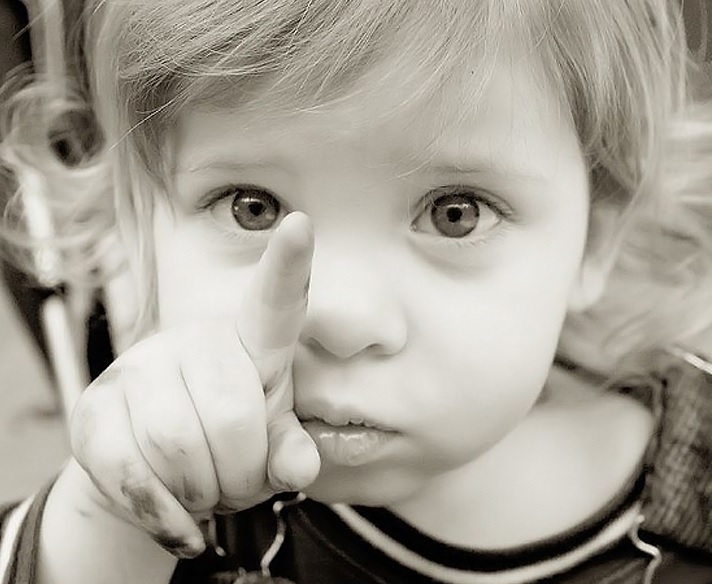 The life of a small child is comprised of a daily onslaught of tempting surfaces begging for the artistry of a crayon, tall places crying out to be scaled, lovely little objects in need of a mouth or nose to visit, and dozens of other alluring glass and liquid and sharp things to be explored through the physics of gravity, the kinetics of concoctions, and the application of Newton’s Laws of Motion. There is only one force powerful enough to defeat this nearly irresistible call of adventure, imagination, and discovery…the No!
The life of a small child is comprised of a daily onslaught of tempting surfaces begging for the artistry of a crayon, tall places crying out to be scaled, lovely little objects in need of a mouth or nose to visit, and dozens of other alluring glass and liquid and sharp things to be explored through the physics of gravity, the kinetics of concoctions, and the application of Newton’s Laws of Motion. There is only one force powerful enough to defeat this nearly irresistible call of adventure, imagination, and discovery…the No!
Every child knows the power of the No to circumvent the most well-laid plans. Even tiny babies just weeks into the world are introduced to its power when they grasp a fistful of hair while nursing or reach for some lovely, squishy stuff while getting a diaper change. That itty bitty two-letter word is packed with a force beyond comprehension to a toddler, and when they finally figure out how to wrap their little lips around those letters and form the word “NO!” themselves, the possibilities seem limitless!
Do you want a cookie? “No!”…Well, actually, yes, but how cool is it that when I said “No!” I controlled whether or not someone gave me a cookie!
Do you want Daddy to hold you? “No!” Well, yes, but I got to decide whether someone held me or not for a change!
Do you want to play outside? “No!” Actually, I do, but do I really get to decide for myself where I go? Cool!
That kind of power and control can go to a little person’s head, for sure! And the change in the big people when the word is used against them clearly demonstrates its incredible value. Their faces go from happy to serious or even angry, and sometimes a little person can even make a big person yell. What dazzling power!
And then when little ones manage a few more words in their vocabulary, they can add direct quotes from the most powerful beings they know ~ mommy and daddy. Quotes like, “I said ‘No’!” and “Don’t you tell me ‘No’!” and “No means ‘No’!”
The authority! The dominion! The clout! And using them against those powerful beings, watching them turn red in the face and yell and threaten…well, it’s a little scary and makes a small person feel really disconnected and upset…but the surge of intense pleasure at feeling powerful and in control almost makes them feel like a big person for a moment!
And that’s what they most long to be, just like mommy and daddy ~ big and strong and smart and powerful.
So what’s a mommy or daddy to do when confronted with the No from their little power-mongers? First, take a deep breath, and then engage those adult brains.
What inherent power is there, really, in a little two-letter word? Only the power we give it! What if, instead of that tiny word being able to push our buttons, we just disconnected the buttons entirely and didn’t react to the No at all? It would simply become a no, just another word to celebrate our precious little people adding to their fledgling vocabularies.
What if we backed up even further and disenfranchised the No from the beginning? When our newborn baby’s flailing hands caught a tiny fistful of hair, what if we just smiled and gently removed it and kissed those itty bitty little fingers?
When our intrepid little explorers discovered the wonders of kitchen cabinets, what if we used cabinet locks but left one or two full of pots and pans and plastic bins for them to discover?
What if when our little people headed for the walls to do their best Michelangelo interpretation on them, we simply intercepted them and offered alternative canvases?
Or what if when they ascended the kitchen cabinets, we just scooped them up and headed outdoors for some climbing adventures?
The thing is, the No is only the No when we, the adults, make it the No. And it can become simply a no when we get creative and interactive and stop using a tiny two-letter word like it has “Phenomenal Cosmic Power in an itty-bitty living space!” (Aladdin 1994)
Related posts:
When Children Act Out ~ Reflecting Our Emotions
7-Year-Old Gentle Parenting Crusader
Changing the World, One Little Heart at a Time
Practical, Gentle, Effective Discipline
 Award-winnning author, L.R.Knost, is the founder and director of the children's rights advocacy and family consulting group, Little Hearts/Gentle Parenting Resources, and Editor-in-Chief of Holistic Parenting Magazine. Books by L.R.Knost include Whispers Through Time: Communication Through the Ages and Stages of Childhood ; Two Thousand Kisses a Day: Gentle Parenting Through the Ages and Stages ; The Gentle Parent: Positive, Practical, Effective Discipline ; and Jesus, the Gentle Parent: Gentle Christian Parenting the first four books in the Little Hearts Handbook gentle parenting series, and children’s picture books Petey’s Listening Ears and the soon-to-be-released Grumpykins series.
Award-winnning author, L.R.Knost, is the founder and director of the children's rights advocacy and family consulting group, Little Hearts/Gentle Parenting Resources, and Editor-in-Chief of Holistic Parenting Magazine. Books by L.R.Knost include Whispers Through Time: Communication Through the Ages and Stages of Childhood ; Two Thousand Kisses a Day: Gentle Parenting Through the Ages and Stages ; The Gentle Parent: Positive, Practical, Effective Discipline ; and Jesus, the Gentle Parent: Gentle Christian Parenting the first four books in the Little Hearts Handbook gentle parenting series, and children’s picture books Petey’s Listening Ears and the soon-to-be-released Grumpykins series.
Stepping in When Parents are Out-of-Control
[By L.R.Knost, author of The Gentle Parent: Positive, Practical, Effective Discipline, Whispers Through Time: Communication Through the Ages and Stages of Childhood and Two Thousand Kisses a Day: Gentle Parenting Through the Ages and Stages now available on Amazon and through other major retailers.]
~~~~~~~~~~~~~~~~~~~~~
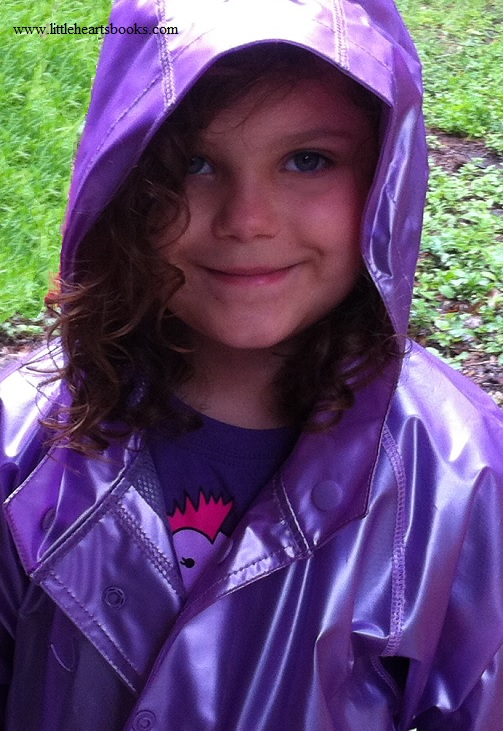 Parents often ask how they can gently and effectively approach a parent who is berating or smacking or otherwise mistreating their child. While the reality is that there is no way to intervene without offending the parent, no matter how kindly it is done, that doesn’t necessarily mean we shouldn’t intervene. Obviously if we believe the child is in danger we should always contact the authorities immediately. Other times, though, there’s no real physical danger, but we can see the parent is out-of-control, is struggling with parenting, or is just too stressed or self-focused to care. What do we do then? Can we intervene in any meaningful, effective way? Should we even try?
Parents often ask how they can gently and effectively approach a parent who is berating or smacking or otherwise mistreating their child. While the reality is that there is no way to intervene without offending the parent, no matter how kindly it is done, that doesn’t necessarily mean we shouldn’t intervene. Obviously if we believe the child is in danger we should always contact the authorities immediately. Other times, though, there’s no real physical danger, but we can see the parent is out-of-control, is struggling with parenting, or is just too stressed or self-focused to care. What do we do then? Can we intervene in any meaningful, effective way? Should we even try?
To answer, let me first me share with you an interesting encounter my seven-year-old little funnyface had recently. She was away from me for four hours in a backstage room with around forty other two- to seven-year-olds for their second ballet recital of the day. A parent volunteer in the room apparently lost her temper with her five-year-old, grabbed her arm, and dragged her across the room with her daughter screaming and fighting to get away, then shoved her in a corner, yelled at her, and pinched her among other things. My seven-year-old related this to me on our way home from her recital and said:
“I saw the mom was having trouble balancing her temper, and I wanted to help her and her poor little girl in the pretty blue ballet dress. The mom cornered the little blue girl and kept yelling and pinching her and flicking her. So I went to her and told her that my mom wrote gentle parenting books and asked if I could have her address so I could ask you to send her one. She didn’t respond to me, but her friend who was there asked for your name, so I told her and she looked it up on her phone and found your books. And then I heard the mad mom tell her friend that she just didn’t know what to do. I said to her that she gets that reaction from her daughter because that’s the reaction she gives to her daughter. I told her that it was like putting a trail of gas all the way to her home because the fire will follow the gas and make the house on fire. Because, you know, anger is like fire. She didn’t talk to me, but her friend did, the one who looked your books up on her phone. I told her that if her friend didn’t know what to do, she just had to listen, because then she would know what to do. Listening is always the first step. And I said to her that kids aren’t just, you know, like things or nothings, we’re people. I wasn’t mean to her, mama. I was very kind when I talked to her even though she didn’t listen to me or talk to me back. I was kind because I wanted her to see how nice kindness felt, then maybe she would want to be kind, too.”
Did the mother suddenly decide to change her parenting? No. But her friend overheard the exchange and wanted to know more. Did the “little blue girl” escape the manhandling and anger of her mother’s adult temper tantrum? No. but she, too, overheard my daughter’s words, and she saw that someone cared. No one can possibly measure the impact a single moment of kindness has on another soul.
And what about my little funnyface? Children learn what they live. They imitate what they see their parents, their most powerful role models, doing. My children have seen me gently intervene on a number of occasions when a parent was out-of-control. They have patiently waited for my attention while I answered a parent’s email or message asking for help with a parenting issue. The older ones have proofread my books, and the younger ones have offered ideas for chapter titles and book covers. They have seen gentle parenting advocacy at work, day in and day out.
Children really do learn what they live. They also walk out what they learn in their own unique way. One of my six, my oldest daughter, went into psychology and became a Family Therapist. She now works with Social Services trying to help families at risk before their children end up in foster care. Another one feels other children’s distress so deeply that we’ve had to leave shops, restaurants, and parks because she gets so upset by ‘normal’ parenting, but she writes her feelings rather than confronting people directly. One day you’ll see her thought-provoking children’s books on store shelves, mark my words. My seven-year-old, as evidenced by the vignette above, is very much like her oldest sister, ready to take on the world in defense of the defenseless.
The value of stepping in when a parent is struggling with their parenting cannot be measured by the parent’s response alone. The parent will most likely be offended and respond negatively, if at all. That momentary break in the parental meltdown, though, does often give the parent a chance to pull themselves together and regain some semblance of control.
But far beyond the value of the moment is the value of a child, helpless in the hands of an angry parent, seeing that someone cares. Of far greater worth than the momentary discomfort of confrontation is the courage and willingness to confront with kindness. And the value goes on and on, in the life of the child, in the hearts of those who overhear and those who hear about it later, and in the life and heart and mind of those courageous enough to meet wrongs head-on and to do so with gentleness.
That value lives on in the beautiful heart and brave spirit of my sweet girl, my little funnyface, my seven-year-old gentle parenting advocate. She is the very definition of my motto, “Changing the World, One Little Heart at a Time.”
If you are confronted with a situation in which a parent or other adult is mistreating a child, don’t hesitate to call authorities if the mistreatment constitutes abuse. But if the adult’s actions wouldn’t be considered abuse by authorities (even if you think they should), here are some ways to step in with the same gentleness and respect with which you would like the adult to treat the child:
- Walk over and speak to the child, quietly asking them what’s wrong and if you can help. Most adults won’t appreciate that, and it’s unlikely that you’ll be able to follow through with your offer, but the child will get the message that they aren’t alone in this world.
- Walk over and speak to the adult, calmly observing that you can see that they are having a hard time and you’d like to help. More often than not they’ll tell you to mind your own business, but sometimes they will unleash some of their frustrations in a torrent of complaints and you may be able to offer some constructive suggestions. Either way, the child will get the message that someone cares.
- Walk over and speak to both the adult and the child at the same time with a friendly smile and share that you’ve been there and understand the frustrations both of them are feeling. Ask if you can help with some suggestions about things that have helped you in similar situations in the past. The adult will often still react negatively, but the child will get the message that there is another way.
Giving the adult a chance to regain control of themselves and to remember that others are watching may at least temporarily stop the mistreatment. More importantly, however, the goal is to help the child feel less alone, less helpless, and more cared for. Never forget that an act of kindness in the life of a child has a ripple effect that expands immeasurably, affecting not only their present, but also impacting who they will become and how they, themselves, will treat others in the future. We may never see the results, but we can rest assured that, “”No act of kindness, no matter how small, is ever wasted.” – Aesop
Related posts:
The Gift of a Strong-Willed Child
Backtalk is Communication…LISTEN
When Children Act Out ~ Reflecting Our Emotions
Bridge Over Troubled Waters~Parenting a ‘Problem’ Child
The Incredible Power of the Whisper
The Taming of the Tantrum: A Toddler’s Perspective
Changing the World, One Little Heart at a Time
Practical, Gentle, Effective Discipline
 Award-winnning author, L.R.Knost, is the founder and director of the children's rights advocacy and family consulting group, Little Hearts/Gentle Parenting Resources, and Editor-in-Chief of Holistic Parenting Magazine. Books by L.R.Knost include Whispers Through Time: Communication Through the Ages and Stages of Childhood ; Two Thousand Kisses a Day: Gentle Parenting Through the Ages and Stages ; The Gentle Parent: Positive, Practical, Effective Discipline ; and Jesus, the Gentle Parent: Gentle Christian Parenting the first four books in the Little Hearts Handbook gentle parenting series, and children’s picture books Petey’s Listening Ears and the soon-to-be-released Grumpykins series.
Award-winnning author, L.R.Knost, is the founder and director of the children's rights advocacy and family consulting group, Little Hearts/Gentle Parenting Resources, and Editor-in-Chief of Holistic Parenting Magazine. Books by L.R.Knost include Whispers Through Time: Communication Through the Ages and Stages of Childhood ; Two Thousand Kisses a Day: Gentle Parenting Through the Ages and Stages ; The Gentle Parent: Positive, Practical, Effective Discipline ; and Jesus, the Gentle Parent: Gentle Christian Parenting the first four books in the Little Hearts Handbook gentle parenting series, and children’s picture books Petey’s Listening Ears and the soon-to-be-released Grumpykins series.
When Children Act Out ~ Reflecting Our Emotions
[Excerpt from The Gentle Parent: Positive, Practical, Effective Discipline by L.R.Knost. Whispers Through Time: Communication Through the Ages and Stages of Childhood, Two Thousand Kisses a Day: Gentle Parenting Through the Ages and Stages, and Jesus, the Gentle Parent: Gentle Christian Parenting also available on Amazon and through other major retailers.]
~~~~~~~~~~~~~~~~~~~~~
Your sweet little four-year-old has suddenly started throwing his food at the table every. single. night. You’ve tried giving him smaller portions of food, letting him help plan the meals, letting him help cook the meals. You’ve tried asking him to stop, demanding that he stop, pleading with him to stop. You’ve tried rewards, sticker charts, and offering desserts. You’ve put him in time-out, yelled at him, even threatened to spank him, which you’ve never, ever done before. But still he throws food at the table.
Then it happens. You’re sitting down for dinner and ask your spouse how the job hunt went that day. A little motion catches your eye and you glance at your four-year-old just in time to see a meatball fly across the table from a small, sauce-covered hand. But something else catches your attention, too, and instead of focusing on the flying meatball, this time you focus on your child.
In the split second before your little guy launched his food volley, you’d seen the fear, almost panic, in his eyes. Your mind races. Why, if he was so afraid of being spanked, would he go right ahead and throw his food? What in the world would make him do the very thing that might bring about the terrible consequence he seemed to be in a panic over?
You hear a deep sigh from your other side. Your spouse seems to be trying to control his urge to retaliate against the little food-fighter across the table from him. Teeth gritted tightly, he grabs a napkin, scoops up the meatball next to his plate, and resumes the conversation.
“Nothing. No one’s hiring. I don’t know what we’re going to do.”
Before you get a chance to respond, a meatball whizzes past your ear and lands smack in the middle of your husband’s plate, splashing marinara sauce all over his shirt. He comes out of his seat with a roar and glares at the little guy who is glaring right back at him, now seemingly unafraid, almost taunting his father to make the next move.
But this time your husband sees something different. He sees the little quivering chin and the small clenched hands and realizes something else is going on. Quietly, he rounds the table and scoops his little fighter into a tight hug, irrespective of the marinara now coating both of their shirts. He doesn’t say a word, just sinks into the chair with his son wrapped in his arms and holds him close against his heart.
As you see your angry, defiant son suddenly melt into his father and bury his face in his daddy’s neck with body-wracking sobs, your own anger melts away. Soon, a small, tear-stained face peeks out and your heart breaks when your son looks back and forth between you and your husband, and his little voice croaks out, “What are we gonna do? Where will we live? Are we gonna starve?” before dissolving in sobs against his daddy’s chest again.
That’s when you realize dinner conversations have revolved around your husband’s job loss and job search for months. Conversations from the past weeks run through your head, and you remember discussing getting a job outside the home to supplement the income from your own home-based business and putting your son into daycare. You remember your husband talking about selling your house, about where you would move, about saving on groceries and other bills. You cringe as you recall mentioning a friend who lost everything, including his home and marriage, when he lost his job.
What had your little preschooler been thinking all this time? What terror must he have felt imagining losing his home, not having enough food to eat, and even his mommy and daddy divorcing? The panic you’d seen in his eyes suddenly made all-too-much sense. He had no way of articulating his fears, the fears he’d felt and heard from you and your husband, but that neither of you had thought to discuss directly with him so that you could offer reassurance and comfort and answer his questions.
You’re so, so thankful that you hadn’t gone as far as actually hitting your son for the first time ever in an attempt to control him, and you vow to yourself that you will never threaten or try to coerce or manipulate your child again, just as you wouldn’t your husband. You commit to finding better ways to communicate with your son, to remain in-tune with him, to focus on the need behind the behavior instead of just trying to control the behavior, to connect with him, and to equip him with better ways of communicating his needs.
As your husband looks up, his eyes wet with tears and his little man still clasped close to his heart, you meet his gaze and see the same realization, the same commitment, the same resolve. Life will still throw you curveballs, but from here on out you’ll handle them together, all together.
Not every action by our children is a sign of trauma or deep, unresolved issues. But every behavior is communication. Behaviors can communicate simple needs such as hunger or the need for sleep. They can communicate unmet needs such as the need to be heard or the need to reconnect. They can communicate stress or discomfort over changes in routine or sickness. Or they can communicate big emotions our children need help processing.
But they can also be a reflection of and a reaction to our big emotions, our illnesses, our unmet needs, our stresses and anxieties, our emotional baggage. Just as children learn best by imitation, making it important to always be aware of the examples we set, their tendency to tune-in to our emotions and upsets makes it vital for us to stay in-tune with them so that we can alleviate their anxieties and answer their questions and ease their fears.
It’s important to be open with them in age-appropriate language about ongoing family issues or health problems or other stresses, but remember that children are not equipped to handle adult stresses and emotions, so be careful to avoid dumping your emotional baggage on them. If you’ve got traumas from your past or are dealing with any kind of emotional or mental instability, you need to work through those issues on your own or seek help so that they don’t negatively impact our relationship with our children.
Simply reacting to our children’s behavior rather than responding to the need motivating the behavior not only leaves us in the dark as to what our children are thinking and feeling, but also misses an opportunity to address the root of the behavior. When we pause, breathe through our own visceral reactions, and focus on our child instead of our child’s actions, we can better discern the need behind the behavior and meet that need, thus eliminating the behavior itself with no need for correction and opening the door to guiding our children to better ways of expressing themselves in the future. The end result is not only the resolution of the present issue, but also strengthening of the parent/child relationship and giving our children the reassurance that they aren’t alone in dealing with their stresses and questions and fears and can always come to us, their ‘safe haven’ in times of need.
If you’ve been parenting from a place of emotional neediness or stress, working through your own emotional baggage to a place of peace will help you to bring that peace into your parent/child relationship. It can be very difficult to step out of a reactionary cycle with your children, though. One pitfall many parents face when trying to move away from a punishment-based or reactionary parenting style is going too far in the opposite direction and failing to set firm, reasonable limits. Children need boundaries to feel safe and in control. If you’re having trouble balancing the desire to parent gently and peacefully with the need to guide our children to stay within reasonable boundaries, here are some tools that may help:
Practical, Gentle, Effective Discipline
*Also published in The Natural Parent Magazine
Related posts:
Stealing God’s Gift: Free Will is a Gift to be Nurtured, Not a Curse to be Broken
Spare the Rod: The Heart of the Matter
Jesus, the Gentle Parent: Gentle Christian Parenting
Tattered Tapestries: Weaving Trust Through the Chaos
Fear Doesn’t Lead to Faith: Becoming Your Child’s Safe Place
Where Did You Learn Love, Child?
 Award-winnning author, L.R.Knost, is the founder and director of the children's rights advocacy and family consulting group, Little Hearts/Gentle Parenting Resources, and Editor-in-Chief of Holistic Parenting Magazine. Books by L.R.Knost include Whispers Through Time: Communication Through the Ages and Stages of Childhood ; Two Thousand Kisses a Day: Gentle Parenting Through the Ages and Stages ; The Gentle Parent: Positive, Practical, Effective Discipline ; and Jesus, the Gentle Parent: Gentle Christian Parenting the first four books in the Little Hearts Handbook gentle parenting series, and children’s picture books Petey’s Listening Ears and the soon-to-be-released Grumpykins series.
Award-winnning author, L.R.Knost, is the founder and director of the children's rights advocacy and family consulting group, Little Hearts/Gentle Parenting Resources, and Editor-in-Chief of Holistic Parenting Magazine. Books by L.R.Knost include Whispers Through Time: Communication Through the Ages and Stages of Childhood ; Two Thousand Kisses a Day: Gentle Parenting Through the Ages and Stages ; The Gentle Parent: Positive, Practical, Effective Discipline ; and Jesus, the Gentle Parent: Gentle Christian Parenting the first four books in the Little Hearts Handbook gentle parenting series, and children’s picture books Petey’s Listening Ears and the soon-to-be-released Grumpykins series.
The Color of Change
[Portions reprinted from The Gentle Parent: Positive, Practical, Effective Discipline by L.R.Knost. Whispers Through Time: Communication Through the Ages and Stages of Childhood and Two Thousand Kisses a Day: Gentle Parenting Through the Ages and Stages also available on Amazon and through other major retailers.]
~~~~~~~~~~~~~~~~~~~~~

So few parents today were raised peacefully and respectfully by their own parents that it’s no surprise that a big issue in the gentle parenting community is how to overcome the stumbling blocks of change. Moving from a control-based parenting style, whether you’re used to spanking or time-outs or reward charts or some combination of the three, to a connection-based parenting style is a heart and mindset change as much as it is a lifestyle change. The undeniable fact is that change is hard work. Whether you’re trying to overcome your own childhood or your own already-established parenting habits, you can expect it to get harder before it gets easier. Just like with any lifestyle change, you will hit walls along the way, and they might even knock you back a step or two. Here are five tips to help you keep calm and carry on to achieve your parenting goals:
1) Commit to no hitting or other physical expressions of anger or frustration, and let that be your starting point, the line in the sand that you absolutely won’t cross. Just like in marriage, if you don’t make a commitment, there’s nothing to keep you from straying back into old patterns.
2) Rethink your parenting role and move from trying to force or manipulate or plead or coerce or use any other tactic to try to control your child’s behavior and instead build a desire in your child to cooperate because they trust you to make good decisions and to want them to be happy and safe. Do that by taking all of that energy that’s been going into trying to control their behavior (external controls) and focusing it on trying to build your connection and modeling the behavior you want to encourage (building internal controls).
3) Examine what you’re modeling. If right now you are insisting on your own way and reacting emotionally with anger and power-plays to your child’s lack of cooperation, what are you modeling? Stubbornness and lack of emotional regulation (i.e. adult-style tantrums). If, instead, you connect with your child, engage them in creative problem-solving, and work together with them toward a resolution to whatever issue you’re having, what are you modeling? Compromise, resourcefulness, and cooperation. Definitely worthwhile life lessons!
4) Keep working on you. Remind yourself that it’s your emotions and experiences and expectations that are causing your outbursts, not your little one’s behavior. Ask yourself why you’re so upset. Let yourself explore your inner triggers. Work through that internally instead of reacting to it externally.
5) Choose a touchstone in a color that will help to keep you grounded, something to look at or hold on to when you feel yourself slipping back into old thinking and behavior patterns. It could be a necklace or bracelet or key chain in a color that captures the essence of the parent you want to be to help you stay focused as you work your way toward becoming that parent. Colors have psychological implications, so some good choices might be blue which is the color of peace and trust; turquoise which is the color of communication; pink which is the color of unconditional love; or magenta which is the color of harmony. You can also place the color around your house as a reminder of the peaceful home you’re trying to create and as a symbol of change and renewal to help you remember to stop and breathe and think before responding to your child.
Remember, it’s a huge change to go from demanding obedience to inviting cooperation, and if you are already in an adversarial pattern with your child, that process will take extra time and patience. And keep in mind that no parenting ‘works’ to change a child into an adult or into a perfect little puppet. Children are imperfect humans being raised by imperfect humans in an imperfect world, after all! But shifting your thinking from expecting, or demanding, obedience to working with your child, understanding them, connecting with them, and inviting them to cooperate (i.e. Instead of “If you don’t put your dinner dishes in the sink, you won’t get ice cream for dessert” try “Let me know when your dishes are in the sink so I can get your ice cream for you.”) is the first and most important step toward a gentler style of parenting and a more peaceful home.
*Having gentle parenting tools ready and available in your ‘toolbox’ will go a long way toward helping you to stick to your commitment to be a more gentle parent. Here are some links to practical alternatives to punishment:
Practical, Gentle, Effective Discipline
Testing the Boundaries~What’s a Parent to Do?
*Also published in The Natural Parent Magazine
Related posts:
When Children Act Out ~ Reflecting Our Emotions
Backtalk is Communication…LISTEN
Bridge Over Troubled Waters~Parenting a ‘Problem’ Child
The Taming of the Tantrum: A Toddler’s Perspective
The Thoughtful Parent’s Guide to Positive Parenting Guides
 Award-winnning author, L.R.Knost, is the founder and director of the children's rights advocacy and family consulting group, Little Hearts/Gentle Parenting Resources, and Editor-in-Chief of Holistic Parenting Magazine. Books by L.R.Knost include Whispers Through Time: Communication Through the Ages and Stages of Childhood ; Two Thousand Kisses a Day: Gentle Parenting Through the Ages and Stages ; The Gentle Parent: Positive, Practical, Effective Discipline ; and Jesus, the Gentle Parent: Gentle Christian Parenting the first four books in the Little Hearts Handbook gentle parenting series, and children’s picture books Petey’s Listening Ears and the soon-to-be-released Grumpykins series.
Award-winnning author, L.R.Knost, is the founder and director of the children's rights advocacy and family consulting group, Little Hearts/Gentle Parenting Resources, and Editor-in-Chief of Holistic Parenting Magazine. Books by L.R.Knost include Whispers Through Time: Communication Through the Ages and Stages of Childhood ; Two Thousand Kisses a Day: Gentle Parenting Through the Ages and Stages ; The Gentle Parent: Positive, Practical, Effective Discipline ; and Jesus, the Gentle Parent: Gentle Christian Parenting the first four books in the Little Hearts Handbook gentle parenting series, and children’s picture books Petey’s Listening Ears and the soon-to-be-released Grumpykins series.
Imagination is the Language of Childhood

If “play is the work of childhood,” as Fred Rogers so aptly put it, then imagination is truly the language of childhood.
Little Hearts/Gentle Parenting Resources is focused on helping parents to see things from their children’s perspective in order to connect and communicate, guide and inspire, and support and encourage their children throughout childhood and beyond.
Children’s books are a wonderful avenue for parents to connect with their children through that lovely language of childhood…imagination. Little Hearts Books LLC is excited to announce the July 2013 release of L.R.Knost’s newest children’s book, A Walk in the Clouds. Written in a playful, rhythmic cadence…
Little toes high in the air
Waving round without a care
Walking cross the sunlit sky
Spotting cloudy shapes go by
A duck floats in a crystal sea
Look! A bird’s nest in a tree
A dancing hippo takes a bow
And there’s a tiny little cow
Laughing penguins all lined up…
and illustrated with whimsical cloud shapes of dancing hippos, laughing penguins, and more, A Walk in the Clouds captures that magical childhood experience of laying in the cool grass while spotting shapes in the clouds drifting overhead and celebrates the pure and simple joy of ‘doing nothing’ that makes childhood such a beautiful season of life. For some ideas about connecting with your children through play, check out this Bucket List for a Happy Childhood!
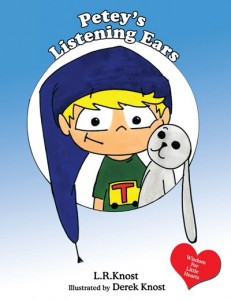 Other children’s books by L.R.Knost include Petey’s Listening Ears the first in the Wisdom for Little Hearts picture book series focused on equipping parents with gentle parenting tools while entertaining and gently guiding children, and Grumpykins, a soon-to-be-released series by L.R.Knost, that develops children’s emotional health and intelligence as little Grumpykins’ bad attitude and grumpiness brings giggles as well as understanding about emotions, perceptions, and self-regulation.
Other children’s books by L.R.Knost include Petey’s Listening Ears the first in the Wisdom for Little Hearts picture book series focused on equipping parents with gentle parenting tools while entertaining and gently guiding children, and Grumpykins, a soon-to-be-released series by L.R.Knost, that develops children’s emotional health and intelligence as little Grumpykins’ bad attitude and grumpiness brings giggles as well as understanding about emotions, perceptions, and self-regulation.
L.R.Knost is the author of the Little Hearts Handbook series of parenting guides. Two Thousand Kisses a Day: Gentle Parenting Through the Ages and Stages and Whispers Through Time: Communication Through the Ages and Stages of Childhood are the first two books in the series. The next book in the series, due to be released in November of 2013, is The Gentle Parent: Positive, Practical, Effective Discipline.
guides. Two Thousand Kisses a Day: Gentle Parenting Through the Ages and Stages and Whispers Through Time: Communication Through the Ages and Stages of Childhood are the first two books in the series. The next book in the series, due to be released in November of 2013, is The Gentle Parent: Positive, Practical, Effective Discipline.
Other books in the Little Hearts Handbook series due to be released in 2014 are
- Gentle Christian Parenting: Reflecting the Heart of Jesus
- Raising Bookworms: Sharing a Love of Reading with Children.
- Gentle Beginnings: The First Year
To find out more about the Little Hearts Handbooks, click here for reviews, sample chapters, author interviews, contact and media information, and giveaways!
 Award-winnning author, L.R.Knost, is the founder and director of the children's rights advocacy and family consulting group, Little Hearts/Gentle Parenting Resources, and Editor-in-Chief of Holistic Parenting Magazine. Books by L.R.Knost include Whispers Through Time: Communication Through the Ages and Stages of Childhood ; Two Thousand Kisses a Day: Gentle Parenting Through the Ages and Stages ; The Gentle Parent: Positive, Practical, Effective Discipline ; and Jesus, the Gentle Parent: Gentle Christian Parenting the first four books in the Little Hearts Handbook gentle parenting series, and children’s picture books Petey’s Listening Ears and the soon-to-be-released Grumpykins series.
Award-winnning author, L.R.Knost, is the founder and director of the children's rights advocacy and family consulting group, Little Hearts/Gentle Parenting Resources, and Editor-in-Chief of Holistic Parenting Magazine. Books by L.R.Knost include Whispers Through Time: Communication Through the Ages and Stages of Childhood ; Two Thousand Kisses a Day: Gentle Parenting Through the Ages and Stages ; The Gentle Parent: Positive, Practical, Effective Discipline ; and Jesus, the Gentle Parent: Gentle Christian Parenting the first four books in the Little Hearts Handbook gentle parenting series, and children’s picture books Petey’s Listening Ears and the soon-to-be-released Grumpykins series.
7 Parenting Tips for Working from Home with Young Children
[By L.R.Knost, author of Two Thousand Kisses a Day: Gentle Parenting Through the Ages and Stages; Whispers Through Time: Communication Through the Ages and Stages of Childhood; The Gentle Parent: Positive, Practical, Effective Discipline; and Jesus, the Gentle Parent: Gentle Christian Parenting available on Amazon and through other major retailers.]
~~~~~~~~~~~~~~~~~~~~~
 With economies struggling all over the world, more and more mamas and daddies are trying to juggle work and children. Working from home is one way to earn a living or supplement your household income while still parenting full-time, but it comes with its own unique set of challenges. Here are seven tips to help you parent your little ones gently while operating a home business:
With economies struggling all over the world, more and more mamas and daddies are trying to juggle work and children. Working from home is one way to earn a living or supplement your household income while still parenting full-time, but it comes with its own unique set of challenges. Here are seven tips to help you parent your little ones gently while operating a home business:
1. Think ‘routine’ instead of ‘schedule.’ Gentle parenting is very much about being in-sync with your child’s needs. Being tied to an inflexible schedule will only cause stress and conflict as your child’s needs evolve from day to day, week to week, month to month, and year to year. Children do, however, enjoy the comfort and familiarity of a regular routine, and knowing what to expect helps them to make transitions throughout the day. So, instead of making a minute to minute schedule, try working with your child to establish a routine that’s flexible enough to adjust to meet their fluctuating needs, but builds into your day the time you need to devote to your work. For example, a routine could look something like this:
- Morning cuddles, breakfast, playtime with mommy
- Playtime while mommy works
- Snack and storytime with mommy
- Play while mommy works
- Lunch and outside playtime with mommy
- Naptime while mommy works
- Playtime with mommy
- Playtime while mommy works
- Help mommy with dinner
- Dinnertime
- Help mommy clean up after dinner
- Playtime while mommy works
- Evening snack
- Bathtime, bedtime story, cuddles, night-night time
Notice that there are no time limits, only a loose plan for the day that you can adjust if your little one is sick or teething or just needs some extra mommy time during the day. A younger baby will need more naps during the day and can be worn in a baby carrier for naps and/or in place of playtime, and some toddlers and preschoolers will outgrow their need for naps earlier than others, and some will need more outside time, etc. so you’ll want to come up with a routine that accommodates your child’s age, sleep needs, and temperament. Also, of course, if your spouse or a trusted family member or friend is available to help, be sure to include them in your routine.
2. Children love the novelty value of new toys, so get a box for each of your working days of the week. Label each box with one day of the week and place a set of toys in them that you only bring out on that day. Remember to think outside the box (lol) and don’t only choose store-bought toys. One box could be full of paper towel and toilet paper tubes and various sizes of bouncy balls and hot wheels, etc. so your little one can make tunnels and chutes and all sorts of inventions. Another box could have kitchen utensils and bowls and pots and pans. Don’t be afraid of a little mess, either! Children are washable, and messy play can keep them happily engaged for long stretches of time, so in one box you could have a plastic tablecloth from the dollar store or even a little blow-up wading pool, some paintbrushes, and shaving cream. Just put down the tablecloth or blow up the pool and add a touch of different colors of food coloring to a few small bowls of shaving cream let your little Picasso go to town! The trick is to be creative and choose things that are out of the ordinary that will engage your child’s imagination, not just keep them busy.
3. For older preschoolers or early elementary ages, an independent project is an excellent idea to help them stay happily engaged while you’re working. During your work periods, provide your child with an ongoing project that they’re interested in and can work on independently. It can be a paint-by-number project, a jigsaw puzzle, a simple model car, a jewelry making set, or any number of other things. Since time is a hard concept for young children, setting a timer for your work periods and having a little sticker chart on the fridge for you and your child to ‘clock in’ and ‘clock out’ of work might be a fun, helpful part of your routine, as well.
4. Meal planning is a huge, huge help in freeing up time and mental energy. Take the time to write out a list of every meal you know how to make that your family likes, then break each of those meals down into their ingredients. Save the list on your laptop, and then twice a month simply cut and paste two weeks of meals into a Word doc. Then print it out, cross off any ingredients you already have on hand, and ‘voila’ you have a shopping list and menu for two weeks done in one shot!
5. Simplify, simplify, simplify. Be realistic about your commitments and expectations for yourself. Have fruit and cheese for breakfast most mornings instead of eggs and pancakes and sausage. It’s healthier, faster, and there’s less to cleanup! Resign from any pre-working-at-home commitments you can such as directing your church’s Vacation Bible School or doing the book work for your local community center. No one expects you to be able to do everything, and someone else can take on those tasks while you’re doing double duty as a work-and-stay-at-home-mom. And, once you’ve cleared up your commitments, avoid the temptation to fill up your time with playgroups and playdates and mommy-and-me classes. Your little ones need you, not activities.
6. Don’t be afraid to go mobile. Find a local park that is suitable for your child’s age and temperament (i.e. Don’t go to a park with a lake if your little one is a runner, and don’t choose a playground with only big kid slides and jungle gyms if you’ve got a toddler.). Once you’ve found a park that’s a good fit, take your laptop or iPhone and answer emails or return phone calls or do other simple tasks that you can manage while swinging your little one in a baby swing or watching your toddler dig in the sand. Make sure you take the time to play with them while you’re there, too, and don’t worry if you get a few judgmental looks from other parents. They don’t know your life, but you know you’re doing the best you can to meet your child’s needs while doing what you need to do for work, so take comfort in that knowledge.
7. Don’t forget to take care of yourself! We can get so caught up in meeting our family’s needs at times that we forget to take care of our own needs. Make sure you include a bit of downtime in your routine each day to simply be still and have a cup of coffee or read the newspaper or simply stare out the window and daydream for a few minutes. Take the time on a regular basis to do your nails, go have your hair done, and make a lunch date with a friend. Even if you bring your little one with you, you’ll still be out and about in a non-working environment for a bit and actually get to feel like an adult. If you’ve got a teething baby or a sick child and aren’t getting much sleep at night, take a nap during the day when your little one’s asleep instead of working during their nap. You may get a bit less work done, but you’ll enjoy your life and your family more, and isn’t that really the point of it all anyway?
*Article by L.R.Knost, reprinted from The Natural Parent Magazine
Related posts:
Practical, Gentle, Effective Discipline
200 Ways to Bless Your Children with a Happy Childhood
10 Ways to Play with your Children when Play is the Last Thing on your Mind
11 Tips to Beat the Weary Dreary Mama Blues
12 Tips for Gently Parenting Your Adult Children (Hint: It starts when they’re newborns!)
 Award-winnning author, L.R.Knost, is the founder and director of the children's rights advocacy and family consulting group, Little Hearts/Gentle Parenting Resources, and Editor-in-Chief of Holistic Parenting Magazine. Books by L.R.Knost include Whispers Through Time: Communication Through the Ages and Stages of Childhood ; Two Thousand Kisses a Day: Gentle Parenting Through the Ages and Stages ; The Gentle Parent: Positive, Practical, Effective Discipline ; and Jesus, the Gentle Parent: Gentle Christian Parenting the first four books in the Little Hearts Handbook gentle parenting series, and children’s picture books Petey’s Listening Ears and the soon-to-be-released Grumpykins series.
Award-winnning author, L.R.Knost, is the founder and director of the children's rights advocacy and family consulting group, Little Hearts/Gentle Parenting Resources, and Editor-in-Chief of Holistic Parenting Magazine. Books by L.R.Knost include Whispers Through Time: Communication Through the Ages and Stages of Childhood ; Two Thousand Kisses a Day: Gentle Parenting Through the Ages and Stages ; The Gentle Parent: Positive, Practical, Effective Discipline ; and Jesus, the Gentle Parent: Gentle Christian Parenting the first four books in the Little Hearts Handbook gentle parenting series, and children’s picture books Petey’s Listening Ears and the soon-to-be-released Grumpykins series.
10 Ways to Play with Your Children when Play is the Last Thing on Your Mind
[Portions reprinted from Whispers Through Time: Communication Through the Ages and Stages of Childhood by L.R.Knost. Two Thousand Kisses a Day: Gentle Parenting Through the Ages and Stages and The Gentle Parent: Positive, Practical, Effective Discipline also available on Amazon and through other major retailers.]
 Let’s be honest. Parents are adults, and not every adult is comfortable sitting on the floor playing with stuffed animals for hours at a time. We don’t always eagerly jump in puddles or make mudpies. We often have heavy things weighing on us…health issues, financial strains, layoffs threatening, marital conflict…and playing is simply the very last thing on our minds.
Let’s be honest. Parents are adults, and not every adult is comfortable sitting on the floor playing with stuffed animals for hours at a time. We don’t always eagerly jump in puddles or make mudpies. We often have heavy things weighing on us…health issues, financial strains, layoffs threatening, marital conflict…and playing is simply the very last thing on our minds.
But the reality that play is the language of childhood and that our children need us to connect with them on their terms is on our minds. The truth that childhood is such a brief season of life and if we blink too long we’ll miss this precious time with our children just adds to the weight we carry, making playing with them seem like just another burden, another demand on our already stretched-too-thin time, attention, and patience.
The thing is, though, that our children do need us to connect with them in play. It’s in the simplicity of play that children sort through the complexity of life and, like puzzle pieces, put it all together to make sense of the world. Play is how they process the overwhelming task of acclimating to a big, strange, sometimes scary world, and they need to feel securely connected to us and in close communication with us as they find their way. Play provides that connection and builds those oh-so-important channels of communication that are essential in a healthy parent/child relationship.
That, of course, leaves us in the dichotomous position of our needs versus our children’s needs which in and of itself is not conducive to a healthy relationship. So what’s a busy, overburdened, stressed parent to do?
Enter, the playful parent who weaves humor into the humdrum, tummy tickling into the routine, dancing into the dreary, and silly songs into the mundane. Here are ten ways to weave playful parenting into the ordinary moments of everyday life:
- When your baby is an infant, babywearing is the secret to playful connection and communication building. Wearing your baby close to your heart, singing and swaying and placing soft kisses on a tiny head while doing dishes and sweeping the floors and taking the dog for walks is a lovely, low-stress way to weave playfulness into your day.
- When your baby is a bit older, continue wearing him as long as you both are comfortable with it because riding high on your hip or back lets him see the world from your vantage point and offers everyday moments to play with bubbles in the sink as you wash dishes, to dance through the house as you put away laundry, and to giggle together as you grocery shop.
- Daily routines offer awesome opportunities to play as you ‘tickle’ your little one’s teeth instead of brush them, ‘capture’ wild shoes that try to escape when you’re leaving the house, and ‘wrestle’ with your little pajama monster before bed.
- Wrangling a reluctant child into the carseat is often a dreaded daily task. Try making a game out of it by tickling a little tummy while you buckle up straps or blowing some bubbles to distract your little one or making up a silly buckle-up song to ease the transition.
- While driving, turn off the radio and make up silly stories or songs or simply talk about where you’re going or what you see as you drive.
- Reading to your little one from birth onward is the single best way to raise a reader. Try making it more interactive by acting out the story or using different voices to read or letting your child guess what’s going to happen on each page before you read it.
- Getting out the door in the morning can be a challenge. Turn it into a real challenge by having hopping contests to the car. Let your little one win and give tickle-kisses as their prize!
- Bathtime is a great time for fun. Set sail to distant shores with your little pirate and search for hidden treasure or go on a safari and find jungle animals floating in piles of bubbles or go spelunking and make cave drawings on the sides of the tub with bath crayons.
- As your children get older their need for playful connection and communication is still strong. Play word games in the car. Turn math homework into playtime by using manipulatives to help them work things out. Cook together while singing pop tunes. Arm wrestle at the dinner table. Have a quick pillow fight in the morning to put everyone’s grumpies to sleep.
- Chores are a real chore. Try turning them into a game, instead! Get out a board game with dice and every time someone rolls they not only move their game piece, but pick up the same number of toys and put them away and then race back in time for their next turn.
The central idea here is to intentionally weave fun and play and connectedness and communication into your everyday moments to turn ordinary days into extraordinary memories that will last a lifetime!
Related posts:
Practical, Gentle, Effective Discipline
200 Ways to Bless Your Children with a Happy Childhood
11 Tips to Beat the Weary Dreary Mama Blues
12 Tips for Gently Parenting Your Adult Children (Hint: It starts when they’re newborns!)
Tots to Teens~Communication Through the Ages and Stages
The Bookshelf: To Read or Not To Read
 Award-winnning author, L.R.Knost, is the founder and director of the children's rights advocacy and family consulting group, Little Hearts/Gentle Parenting Resources, and Editor-in-Chief of Holistic Parenting Magazine. Books by L.R.Knost include Whispers Through Time: Communication Through the Ages and Stages of Childhood ; Two Thousand Kisses a Day: Gentle Parenting Through the Ages and Stages ; The Gentle Parent: Positive, Practical, Effective Discipline ; and Jesus, the Gentle Parent: Gentle Christian Parenting the first four books in the Little Hearts Handbook gentle parenting series, and children’s picture books Petey’s Listening Ears and the soon-to-be-released Grumpykins series.
Award-winnning author, L.R.Knost, is the founder and director of the children's rights advocacy and family consulting group, Little Hearts/Gentle Parenting Resources, and Editor-in-Chief of Holistic Parenting Magazine. Books by L.R.Knost include Whispers Through Time: Communication Through the Ages and Stages of Childhood ; Two Thousand Kisses a Day: Gentle Parenting Through the Ages and Stages ; The Gentle Parent: Positive, Practical, Effective Discipline ; and Jesus, the Gentle Parent: Gentle Christian Parenting the first four books in the Little Hearts Handbook gentle parenting series, and children’s picture books Petey’s Listening Ears and the soon-to-be-released Grumpykins series.
3 Simple Steps from Diapers to Potty
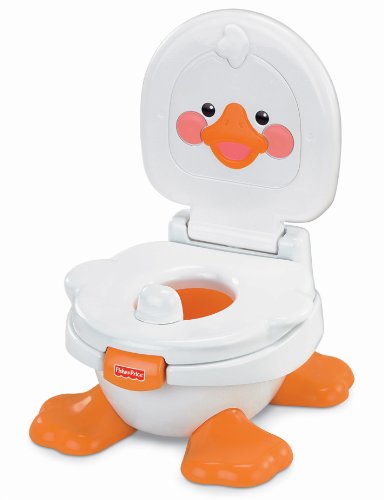
[Reprinted from Two Thousand Kisses a Day: Gentle Parenting Through the Ages and Stages by L.R.Knost. Whispers Through Time: Communication Through the Ages and Stages of Childhood and The Gentle Parent: Positive, Practical, Effective Discipline also now available on Amazon and through other major retailers.]
~~~~~~~~~~~~~~~~~~~~~
I have an adorable little diaper-bottomed 26 month old who will never be potty-trained. She will, however, in her own time, move from diapers to potty as easily as she went from rolling to scooting, from scooting to crawling, from crawling to walking. As a mama of six from 25 years down to 26 months old, I’ve supported my little people through the transition to pottying plenty of times, and I’ve learned to go with the flow. (Sorry. I have mentioned that I like wordplay, right?)
So, what does ‘going with the flow’ mean in the diapers-to-potty stage?
It means no charts, no stickers, no rewards, no punishment, no pressure, no ‘training’ of any kind.
It means I don’t drive myself nuts looking for signs of ‘readiness’ or getting frustrated by accidents or worrying about what anyone else thinks.
It means my children and I are on the same team, period. I don’t set my little ones up for a power-struggle, don’t shift our relationship from connected to contentious, don’t push them to develop according to some arbitrary schedule.
It means letting my little ones learn about what their bodies can do simply and naturally on their own time-table.
And it means not ascribing ulterior motives to normal behavior.
Humans have a God-given, in-built instinct to seek privacy when emptying their bowels, a vital protection against the spread of disease in ancient times. Modern parents, though, often believe a child who seeks a little alone-time to poop is “hiding because they know they’re doing something wrong.”
That attitude from parents gives children the message that normal bowel functions are somehow shameful and disgusting. That often not only pushes children to seek even more seclusion while pooping, but can also lead to ‘holding’ behaviors with their resultant medical issues and can actually delay the transition to pottying, the exact opposite effect the parents are trying to achieve!
Also, when asked if they are pooping, small children will frequently deny it and even run away. Parents tend to interpret that as lying and often will punish the child, creating an even more challenging environment for little ones to try to navigate their way from diapers to potty. Again, it is a normal human instinct to regard bowel habits as a private issue, and children are in the unfortunate position of not having the ability to articulate their need for privacy with anyting more than a “No!” and a quick getaway.
Parents who recognize that the diapers-to-potty transition is a normal progression of early childhood just like learning to crawl and walk and talk will take the same approach they did with those milestones:
- Let the child determine the time-table. There is a huge range of ‘normal’ when it comes to timing of developmental milestones, including pottying.
- Encourage, don’t push. Just as with rolling, crawling, etc. offering lots of praise and applause without being insistent allows the child to develop at their own pace in a stress-free, supportive environment.
- Model the desired behavior and offer the opportunity to experiment. Sharing our own experiences with our children is our most powerful teaching tool, and experimentation is the foundation of true learning.
Remember, the connection we maintain throughout these transitions in our children’s lives builds the trust and communication so vital to a healthy parent/child relationship.
Here’s what the transition from diapers to potty looks like at our house:

$3.99 Ikea spice rack as a bathroom bookshelf!
From the time my babies can walk (sometimes even earlier) they regularly join me when I go to the bathroom. They sit on a little potty that’s always available or they walk around, familiarizing themselves with this new play-space, and we read books or chat or sing or just hang out.
I occasionally ask if they want to take off their diaper and sit on the little potty, and sometimes they do and sometimes they don’t.
Eventually, the day comes that they pee-pee (we call it ‘peep’ 🙂 ) in the potty.
Then, of course, we sing the pee-pee song, “Pee-pee in the po-tay! Pee-pee in the po-tay!” and dance through the house and everybody else joins in and it’s a great time.
Sometimes, that one event is kind of an ‘ah-ha’ moment for my little ones, and the potty games are on! They start asking to go more and more and are usually out of diapers, accident free, within a couple of weeks. No pressure, no stress, and very little mess.
Sometimes, though, it’s a one-off and my little one happily continues in diapers, visiting the bathroom with me off and on, sometimes hanging out on the potty, sometimes not. Then, when they’re ready, they let me know and their own potty game is on!
The thing is, barring developmental issues, children always, always eventually make the transition to using the potty and end the diaper-bottomed season of their life. In our home they just do it in their own time. It’s as natural and joyous of a developmental milestone as crawling, walking, or talking and, for us, just as celebrated!
Note: There is a rather intense debate in the parenting community over the use/misuse of praising children. While throwing a “Good job” or “Awesome” at a child just to brush them off is…well, a brush off, honestly sharing your excitement and pride in your children is never a bad thing. In our family, we celebrate all ‘firsts’ with our children, praise their efforts and offer encouragement and help when they’re struggling, and admire their accomplishments when they succeed. You can read more about praise here.
Related posts:
Toddler fighting sleep? Here’s help!
Practical, Gentle, Effective Discipline
200 Ways to Bless Your Children with a Happy Childhood
 Award-winnning author, L.R.Knost, is the founder and director of the children's rights advocacy and family consulting group, Little Hearts/Gentle Parenting Resources, and Editor-in-Chief of Holistic Parenting Magazine. Books by L.R.Knost include Whispers Through Time: Communication Through the Ages and Stages of Childhood ; Two Thousand Kisses a Day: Gentle Parenting Through the Ages and Stages ; The Gentle Parent: Positive, Practical, Effective Discipline ; and Jesus, the Gentle Parent: Gentle Christian Parenting the first four books in the Little Hearts Handbook gentle parenting series, and children’s picture books Petey’s Listening Ears and the soon-to-be-released Grumpykins series.
Award-winnning author, L.R.Knost, is the founder and director of the children's rights advocacy and family consulting group, Little Hearts/Gentle Parenting Resources, and Editor-in-Chief of Holistic Parenting Magazine. Books by L.R.Knost include Whispers Through Time: Communication Through the Ages and Stages of Childhood ; Two Thousand Kisses a Day: Gentle Parenting Through the Ages and Stages ; The Gentle Parent: Positive, Practical, Effective Discipline ; and Jesus, the Gentle Parent: Gentle Christian Parenting the first four books in the Little Hearts Handbook gentle parenting series, and children’s picture books Petey’s Listening Ears and the soon-to-be-released Grumpykins series.
12 Tips for Gently Parenting Your Adult Children (Hint: It starts when they’re newborns)
[Portions reprinted from Two Thousand Kisses a Day: Gentle Parenting Through the Ages and Stages by L.R.Knost. Whispers Through Time: Communication Through the Ages and Stages of Childhood; The Gentle Parent: Positive, Practical, Effective Discipline; and Jesus, the Gentle Parent: Gentle Christian Parenting also available on Amazon and through other major retailers.]
~~~~~~~~~~~~~~~~~~~~~
“Life is a succession of lessons which must be lived to be understood.” ~Ralph Waldo Emerson
 All stages of parenting come with their own unique learning curve, their own challenges and frustrations, their own compromises and sacrifices, and their own flubs, false steps, and failures. From those first terror-stricken days with a newborn to the sleep-deprived months of infancy to the challenges of toddlerhood and beyond, parenting is a journey, not a destination. And when subsequent little ones arrive, the journey starts all over again as we discover that the lessons learned from parenting one child don’t always apply to the next as each have their own incomparable personalities, quirks, and individual identities.
All stages of parenting come with their own unique learning curve, their own challenges and frustrations, their own compromises and sacrifices, and their own flubs, false steps, and failures. From those first terror-stricken days with a newborn to the sleep-deprived months of infancy to the challenges of toddlerhood and beyond, parenting is a journey, not a destination. And when subsequent little ones arrive, the journey starts all over again as we discover that the lessons learned from parenting one child don’t always apply to the next as each have their own incomparable personalities, quirks, and individual identities.
The principles of gentle parenting (connection, empathy, respect, etc.) don’t change as our children grow, just as they don’t change from one child to the next. What does change is our understanding of those principles as we grow in wisdom and experience as parents and as human beings. The practical application of gentle parenting principles, though, can look very different from child to child and life stage to life stage. For instance, with an introverted child gentle parenting might involve a greater degree of physical proximity and emotional support whereas with a very extroverted child it may involve a greater degree of energy direction and respectful guidance.
This constancy of principles and individualized application of gentle parenting is no less true when parenting our adult children than it is when parenting our minor children. As gentle parents, we are our children’s first and best friend in the purest and truest definition of friendship. That sets the stage for the transition from the early parent/friend years to the parent-friendship that will characterize our relationship when our children grow into adulthood.
Here are 12 practical tips for gently parenting your adult children:
1.) Begin to consciously pay attention to your own parents’ interactions with you. Mentally catalog what you find helpful and what you find intrusive, what is an acceptable level of involvement, advice, and interaction and what feels overbearing or lacking. Make a mental note (or make actual notes if you’re a list person like me) to remember those feelings when your own children become adults.
2.) Remember, parenting is literally ‘on the job’ learning. Your parents are discovering by trial and error (often lots of error) what their roles and boundaries are in this uncharted territory of parenting adults. Model giving your parents grace when they overstep or underplay their roles. This will set the stage for your children to extend the same grace to you when seemingly overnight you suddenly find yourself learning to parent your own adult children.
3.) While your child is an infant, meet their needs swiftly, consistently, and gently. They won’t remember what you did or didn’t do at this stage, but they will always carry with them the safety, security, and love that they feel in your responsiveness, and that is they will take with them into adulthood.
4.) When your child reaches toddlerhood, focus on connection rather than correction. What will matter most in later years won’t be whether they wore matching shoes or left the park without pitching a fit. What will matter is whether they felt heard, understood, and respected.
5.) As your child moves into the preschool and early childhood years, focus on communication, whether that takes the form of whining, tattling, endless questions or some combination of all three. Continue to build a trust relationship by hearing their heart rather than their tone and responding with gentle guidance.
6.) When your child reaches the middle stages of childhood, listening to the endless stories from your chatterbox or offering empathy and quiet support to your dreamer will help them as they explore who they are and who they want to be when they grow up. You are building the friendship of a lifetime in these interactions, so make them a priority.
7.) Once your child enters the teen years, consciously begin to gradually shift your role into a supporting rather than a leading act. Listen not to their words, their attitudes, their hormones, their angst. Listen instead to their struggles, their hopes, their dreams, their fears. Remember, you are the only adult in the relationship at this point. They still have a lot of maturing to do. Practice self-control. Be honest about your own struggles, fears, and failings. You’ll be amazed at what a connection point that is as your teen discovers that they aren’t alone in their humanness. Be the first one to listen, the first one to forgive, the first one to apologize, the first one to understand, the first one to back down and try to find another way when the going gets tough.
8.) When your child becomes an adult, let them set the pace. Some children will hit eighteen and be ready to move into a university dorm or get a job and an apartment right away. Others will need a slower transition. They may need to stay at home while going to university or while taking some time to try out different jobs as they explore this strange new world of adulthood. There’s nothing wrong with adult children living at home, especially in difficult economic times such as these, but if the time comes that you feel they need a gentle nudge out of the nest you can help them to find an acceptable roommate or two and guide them through the process of settling into independent adulthood.
9.) Once your child is out on their own, your role will shift fully to a support system. Offering unsolicited advice is fine as long as it is briefly stated…once. After that, it becomes intrusive. Offers of help and invitations to family events, etc. should follow the same guidelines.
10.) When your child starts a family of their own, consciously bring to mind how you felt at various times when your own parents supported you in your new role and/or interfered with the establishment of your new little family. Acknowledge to yourself (and to them) that they won’t do everything the way you did, that they will make decisions you wouldn’t make, that you will offer advice that won’t be heeded, and that they will make mistakes and have to learn from them just like you did, and remind yourself that those things are all perfectly okay.
11.) On the subject of making mistakes, remember, just as you wouldn’t want every youthful mistake, every wrong choice, every unfortunate decision to be broadcast to the world or even just joked about privately instead of being left in the past where it belongs, be sure to practice ‘The Golden Rule of Parenting’ and treat your children how you prefer to be treated.
12.) Keep in mind that the person you are now isn’t the person you were when you first started out on your journey into adulthood. Expecting your young adult children to think and experience and process life and events the way that you do now is like expecting a newborn baby to be able to pick up a book and read it. So set aside your expectations and just offer your support as they learn to navigate the world of adulthood on their own.
Remember, our life experience can help our adult children, but they need to gain their own life experiences. Our role as parents of adults is to find the balance between too much and too little of pretty much everything: advice, help, assistance, involvement, etc. The voice of experience has an immense amount of wisdom to offer, but only if it also has the wisdom to know when to remain silent.
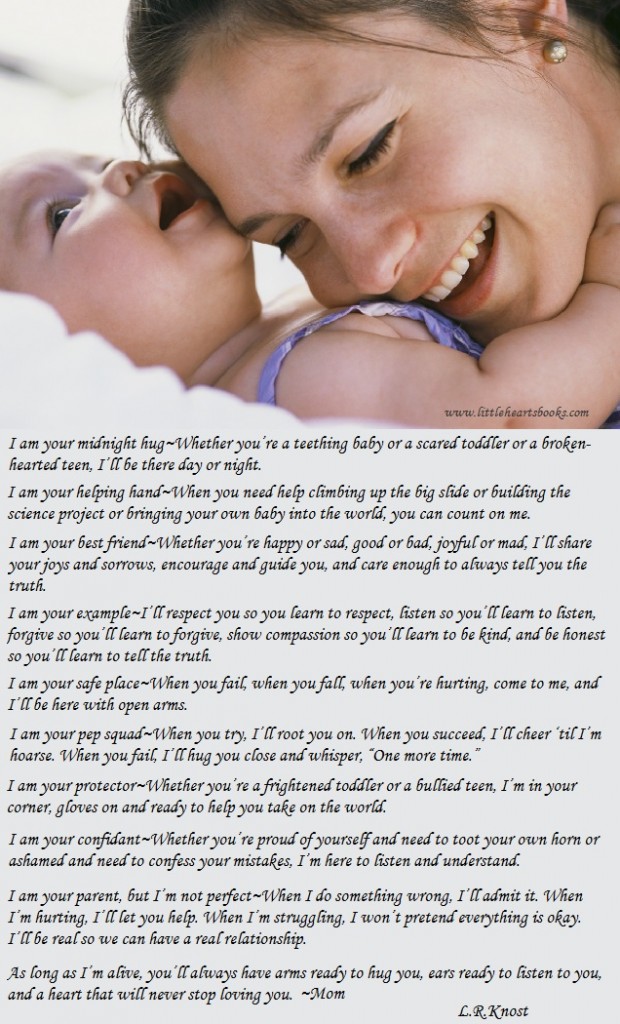
Related posts:
Backtalk is Communication…LISTEN
The Gift of a Strong-Willed Child
Bridge Over Troubled Waters~Parenting a ‘Problem’ Child
Two Thousand Connection Points a Day: Attachment Parenting Beyond Infancy
A Boy, A Girl, and A Baby~Journey to Gentle Parenting
 Award-winnning author, L.R.Knost, is the founder and director of the children's rights advocacy and family consulting group, Little Hearts/Gentle Parenting Resources, and Editor-in-Chief of Holistic Parenting Magazine. Books by L.R.Knost include Whispers Through Time: Communication Through the Ages and Stages of Childhood ; Two Thousand Kisses a Day: Gentle Parenting Through the Ages and Stages ; The Gentle Parent: Positive, Practical, Effective Discipline ; and Jesus, the Gentle Parent: Gentle Christian Parenting the first four books in the Little Hearts Handbook gentle parenting series, and children’s picture books Petey’s Listening Ears and the soon-to-be-released Grumpykins series.
Award-winnning author, L.R.Knost, is the founder and director of the children's rights advocacy and family consulting group, Little Hearts/Gentle Parenting Resources, and Editor-in-Chief of Holistic Parenting Magazine. Books by L.R.Knost include Whispers Through Time: Communication Through the Ages and Stages of Childhood ; Two Thousand Kisses a Day: Gentle Parenting Through the Ages and Stages ; The Gentle Parent: Positive, Practical, Effective Discipline ; and Jesus, the Gentle Parent: Gentle Christian Parenting the first four books in the Little Hearts Handbook gentle parenting series, and children’s picture books Petey’s Listening Ears and the soon-to-be-released Grumpykins series.
Bringing Up Binary: Raising an Obedient Computer
Dear Customer Service,
I think my computer needs professional help. I just don’t know what to do anymore. It won’t respond to me half of the time, and the other half its response is so slow it might as well not respond at all! I need help, and I don’t know where else to turn. Here’s the story:
 I remember how excited I was when I first got my computer. I carefully cut the tape on the box, gently lifted it out, and gingerly settled it in the well-appointed and super organized office I’d had decorated and waiting for what seemed like forever.
I remember how excited I was when I first got my computer. I carefully cut the tape on the box, gently lifted it out, and gingerly settled it in the well-appointed and super organized office I’d had decorated and waiting for what seemed like forever.
Now what to do? I’d never owned a computer before and was so nervous I’d somehow break it. I searched through manuals and how-to’s for dummies, looking for tips from experts and guidance from other computer owners with years of experience. It was so frustrating because everyone seemed to have a different opinion about what to expect and what was important and how to handle all the hardware and software issues that were bound to crop up with computer ownership.
Over time, though, I got more comfortable in my new role as a computer owner. My tentative key tapping became more confident, and I operated my computer like a pro. But then minor irritations began to creep up. I’d input a command and have to wait for my computer to process before it responded, but why should I have to wait? I’d issued the same commands hundreds of times since my computer had arrived. Shouldn’t it obey instantly? I certainly thought so! So, I’d push the enter button a couple more times, and then a couple more, then some other buttons, and the darn thing would freeze up on me!!! Seriously?!?
I’m no push-over, believe me, and I wasn’t about to be manipulated by my own computer! So, I started unplugging it every time it froze. After a few minutes, I’d plug it back in again, but even after extending its time-out of the outlet to longer and longer periods, my computer was still giving me that ring of delayed obedience and then freezing when I pushed its buttons. So, I started giving it a gentle whack on its CPU. (No, I was not abusing it. I was just giving it a little tap to get its attention!) But nothing seemed to be working. I was still having to wait for it to process my commands, and it was actually getting worse!
Then my computer started popping up demands, right in front of what I was working on! “Updates needed.”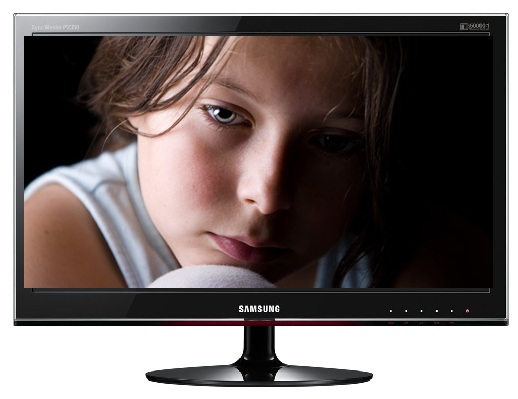 “Virus software update available.” Me, me, me. I want. I want. I want. Isn’t it amazing how completely self-absorbed computers are? Didn’t my computer realize I had a schedule to keep? I had things that needed to get done, an agenda, a life! And on top of all that, I’d just purchased a new little laptop that needed my attention. Why couldn’t my computer understand that it just had to do what it was told and stop giving me a hard time?!? Selfish, that’s why!
“Virus software update available.” Me, me, me. I want. I want. I want. Isn’t it amazing how completely self-absorbed computers are? Didn’t my computer realize I had a schedule to keep? I had things that needed to get done, an agenda, a life! And on top of all that, I’d just purchased a new little laptop that needed my attention. Why couldn’t my computer understand that it just had to do what it was told and stop giving me a hard time?!? Selfish, that’s why!
Well, time went on and my computer kept up it’s delayed obedience and just kept escalating its constant demands with pop up after pop up after pop up. But I knew better than to give in. All it wanted was attention! So I alternated between time-out of the outlet and well-deserved whacks to the CPU, but all I got was slower and slower obedience, longer and longer freezes, and just general unresponsiveness.
I’ve tried to be a good computer owner, but I’m at the end of my tether. Please help!
Sincerely,
Frustrated
Dear Frustrated,
Computers are designed to process input. Basically, that means you get out what you put in. That “demand for attention” is actually your computer communicating a need for input from you, whether it’s for an update  or a virus scan or whatever it’s indicating it needs. If you meet it’s needs, that will not only stop the “demands” but also free it up to run more smoothly and responsively for you. As far as the “delayed obedience,” that’s just how computers are built. It needs time to process your input so that it can respond appropriately. Pushing its buttons over and over is actually causing the freezing you’re concerned about, and unplugging your computer when it freezes just shuts it down right when it’s trying its hardest to work things out. Remember, interaction between owner and computer is the core of computer processing. Finally, stop “whacking” your computer. Call it what you want…hitting, tapping, popping, or whatever…it’s just causing internal damage and resulting in the very problems you’re trying to solve.
or a virus scan or whatever it’s indicating it needs. If you meet it’s needs, that will not only stop the “demands” but also free it up to run more smoothly and responsively for you. As far as the “delayed obedience,” that’s just how computers are built. It needs time to process your input so that it can respond appropriately. Pushing its buttons over and over is actually causing the freezing you’re concerned about, and unplugging your computer when it freezes just shuts it down right when it’s trying its hardest to work things out. Remember, interaction between owner and computer is the core of computer processing. Finally, stop “whacking” your computer. Call it what you want…hitting, tapping, popping, or whatever…it’s just causing internal damage and resulting in the very problems you’re trying to solve.
Sincerely,
Shak N. Mihed
Related posts:
The Measure of Success~Chinese Parents and French Parents Can’t BOTH Be Superior!
Spare the Rod: The Heart of the Matter
Tots to Teens~Communication Through the Ages and Stages
Toddlers, Tantrums, and Time-Ins, Oh My!
 Award-winnning author, L.R.Knost, is the founder and director of the children's rights advocacy and family consulting group, Little Hearts/Gentle Parenting Resources, and Editor-in-Chief of Holistic Parenting Magazine. Books by L.R.Knost include Whispers Through Time: Communication Through the Ages and Stages of Childhood ; Two Thousand Kisses a Day: Gentle Parenting Through the Ages and Stages ; The Gentle Parent: Positive, Practical, Effective Discipline ; and Jesus, the Gentle Parent: Gentle Christian Parenting the first four books in the Little Hearts Handbook gentle parenting series, and children’s picture books Petey’s Listening Ears and the soon-to-be-released Grumpykins series.
Award-winnning author, L.R.Knost, is the founder and director of the children's rights advocacy and family consulting group, Little Hearts/Gentle Parenting Resources, and Editor-in-Chief of Holistic Parenting Magazine. Books by L.R.Knost include Whispers Through Time: Communication Through the Ages and Stages of Childhood ; Two Thousand Kisses a Day: Gentle Parenting Through the Ages and Stages ; The Gentle Parent: Positive, Practical, Effective Discipline ; and Jesus, the Gentle Parent: Gentle Christian Parenting the first four books in the Little Hearts Handbook gentle parenting series, and children’s picture books Petey’s Listening Ears and the soon-to-be-released Grumpykins series.

 Toddlers are infinitely curious little dynamos that may seem like clones of the Energizer Bunny…they keep going and going and going and…well, you get the idea! Even little ones who were supposedly ‘good’ sleepers in infancy often seem to lose the ability and/or the desire to sleep once they reach toddlerhood. Add a baby sibling (or one on the way!) to the mix, and you can find yourself right back to that zombie-mama state you thought you’d left behind after those first few exhausting newborn months. So what’s a zombie-mama to do? Here are a few tips to try and recapture some precious zzz’s for both yourself and your little one(s) and to turn those dreaded bedtime battles into peaceful bedtime snuggles:
Toddlers are infinitely curious little dynamos that may seem like clones of the Energizer Bunny…they keep going and going and going and…well, you get the idea! Even little ones who were supposedly ‘good’ sleepers in infancy often seem to lose the ability and/or the desire to sleep once they reach toddlerhood. Add a baby sibling (or one on the way!) to the mix, and you can find yourself right back to that zombie-mama state you thought you’d left behind after those first few exhausting newborn months. So what’s a zombie-mama to do? Here are a few tips to try and recapture some precious zzz’s for both yourself and your little one(s) and to turn those dreaded bedtime battles into peaceful bedtime snuggles: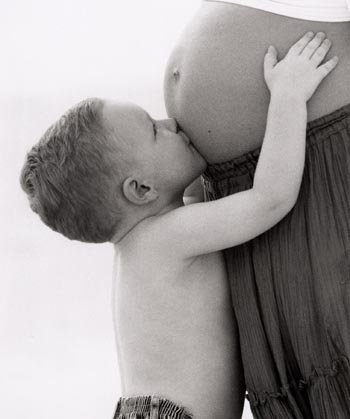 Pregnancy is a time of introspection, excitement, and, often, anxiety for most new mamas. When those new mamas also have other small children at home, that anxiety can become overwhelming as they worry about how they’ll cope with more than one child and how the current little loves of their life will cope with a new sibling. While these are very valid concerns, there are steps you can take to prepare your child for a new sibling and help them to adjust when the new baby arrives that will also help you to cope with life as a mama of more than one little blessing.
Pregnancy is a time of introspection, excitement, and, often, anxiety for most new mamas. When those new mamas also have other small children at home, that anxiety can become overwhelming as they worry about how they’ll cope with more than one child and how the current little loves of their life will cope with a new sibling. While these are very valid concerns, there are steps you can take to prepare your child for a new sibling and help them to adjust when the new baby arrives that will also help you to cope with life as a mama of more than one little blessing. Related posts:
Related posts: “She won’t share!”
“She won’t share!” 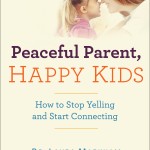
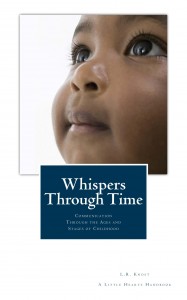
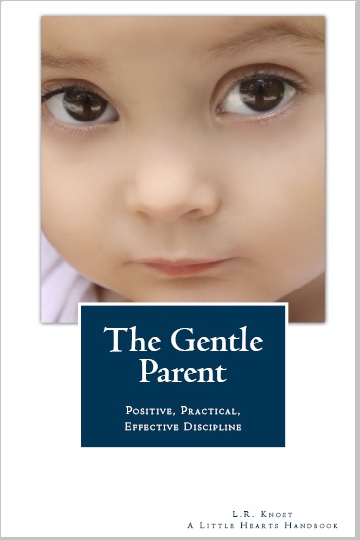

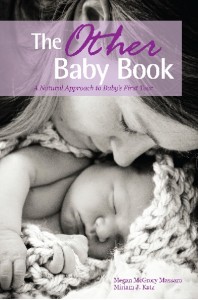
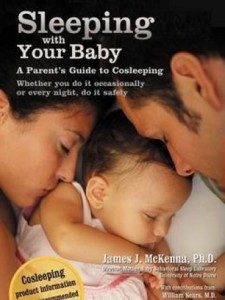
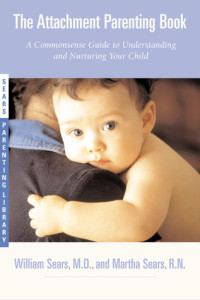
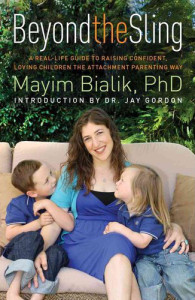
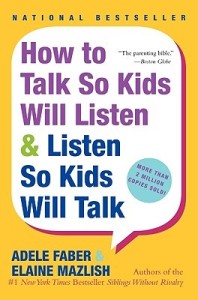
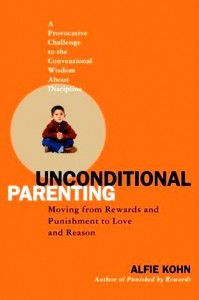
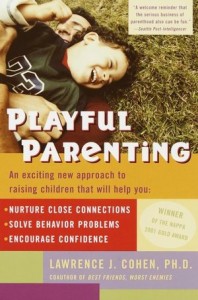
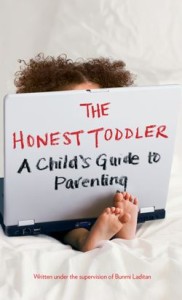
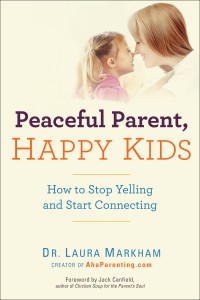
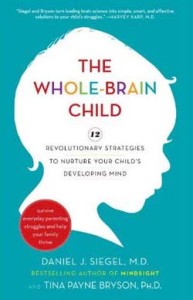

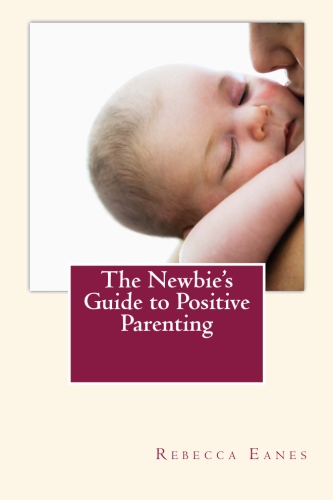
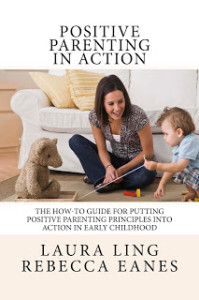
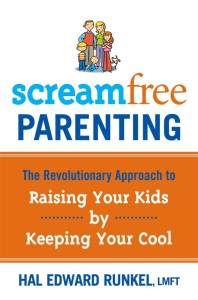
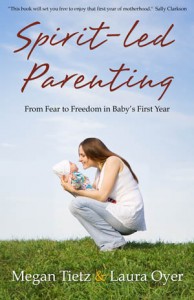




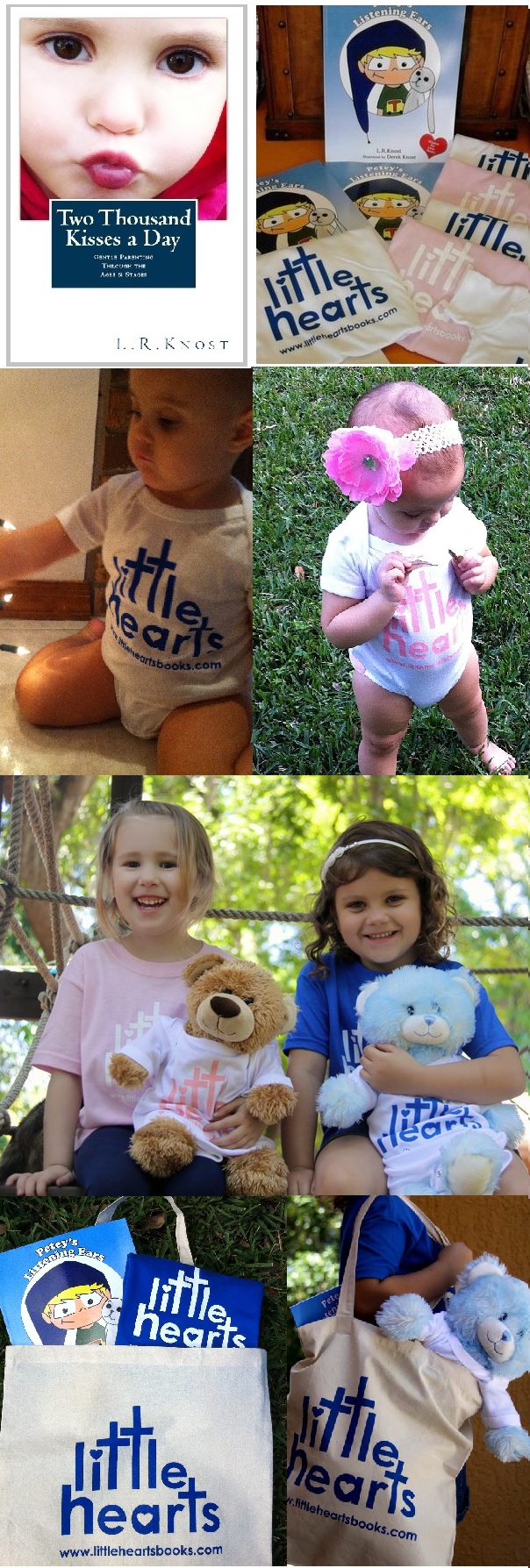
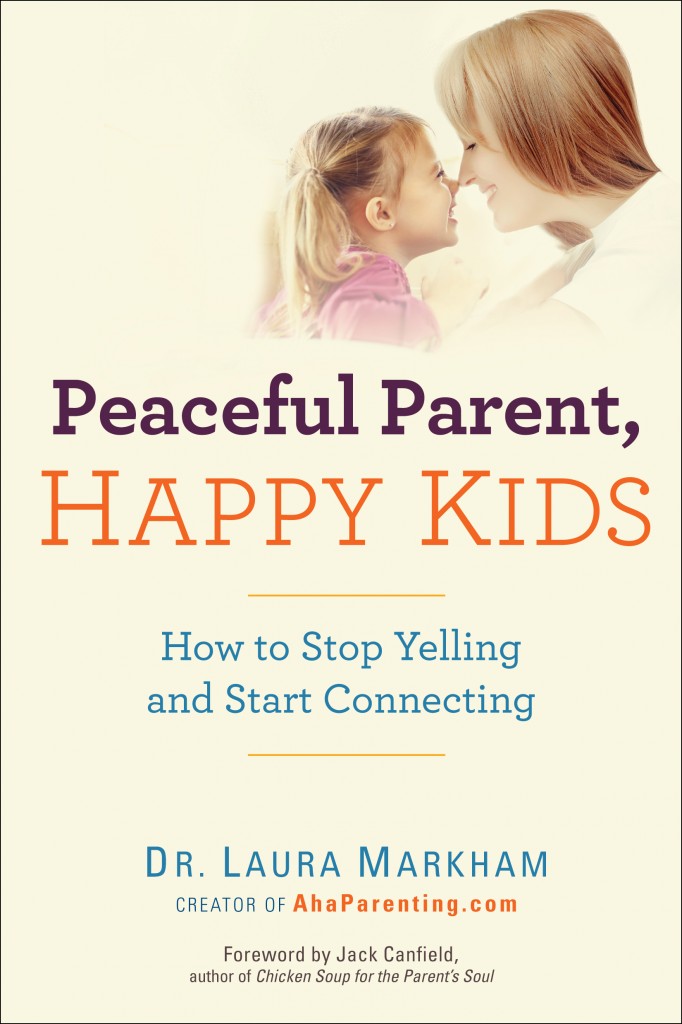
 Dr. Laura Markham trained as a clinical psychologist, but she’s also a mother, so she understands parents as well as kids. Her new book is
Dr. Laura Markham trained as a clinical psychologist, but she’s also a mother, so she understands parents as well as kids. Her new book is 







